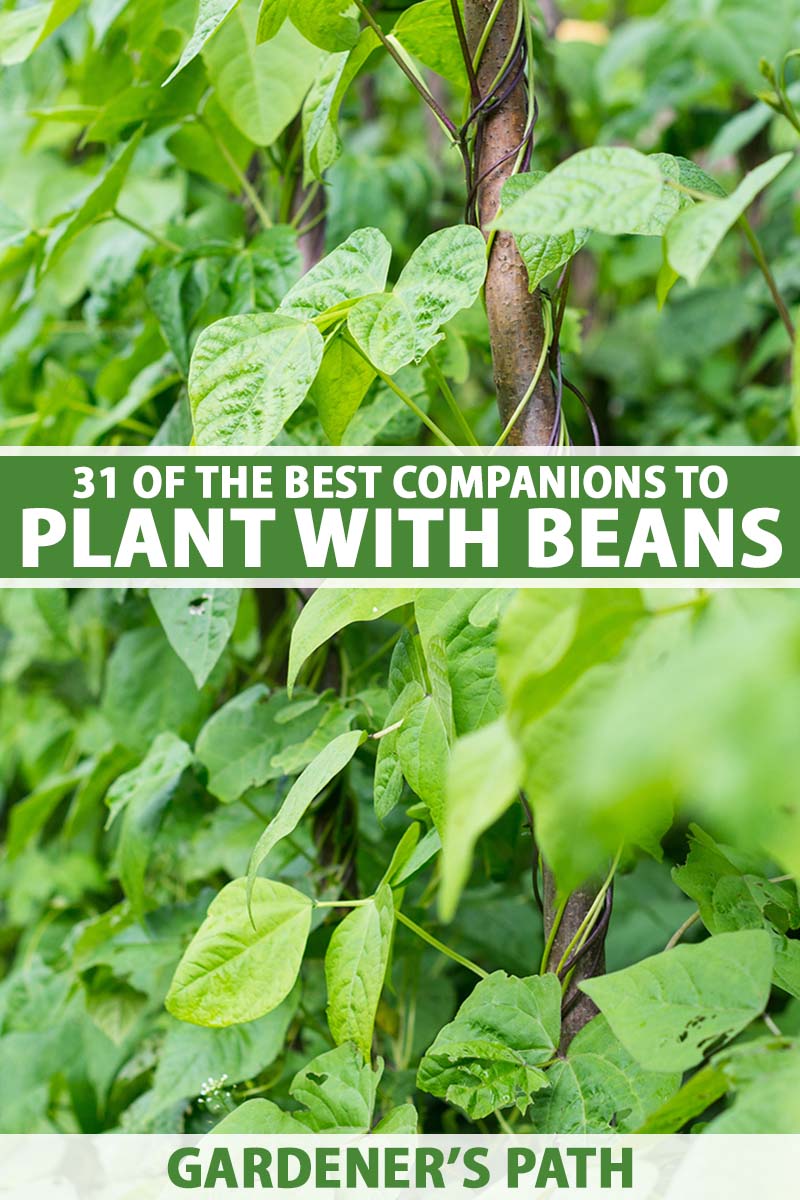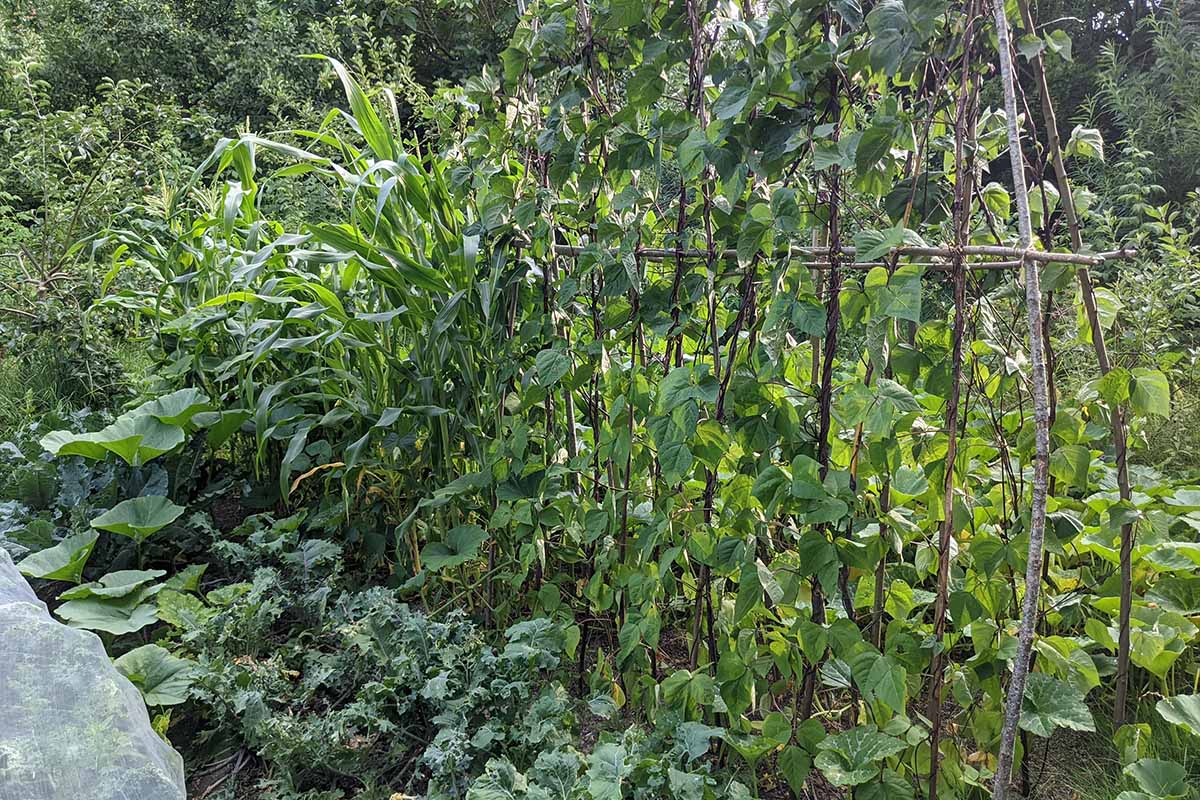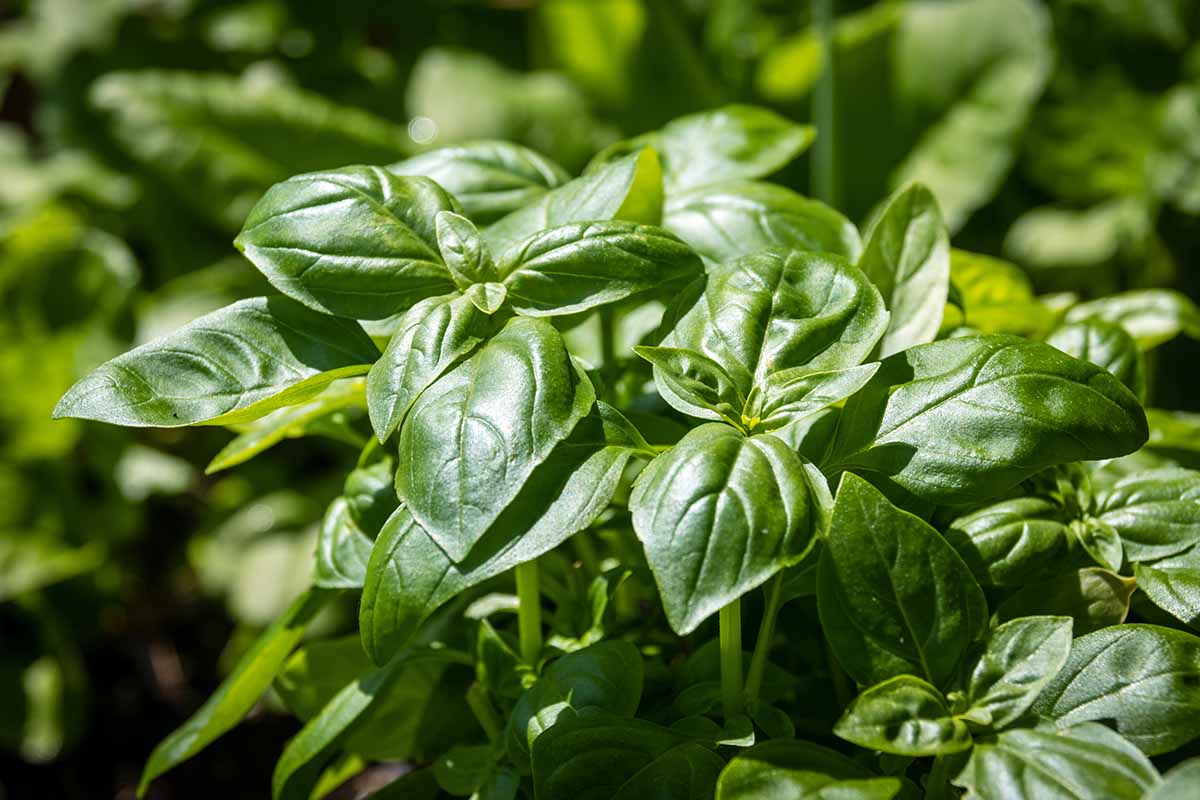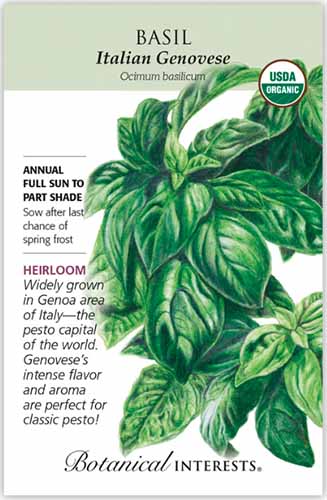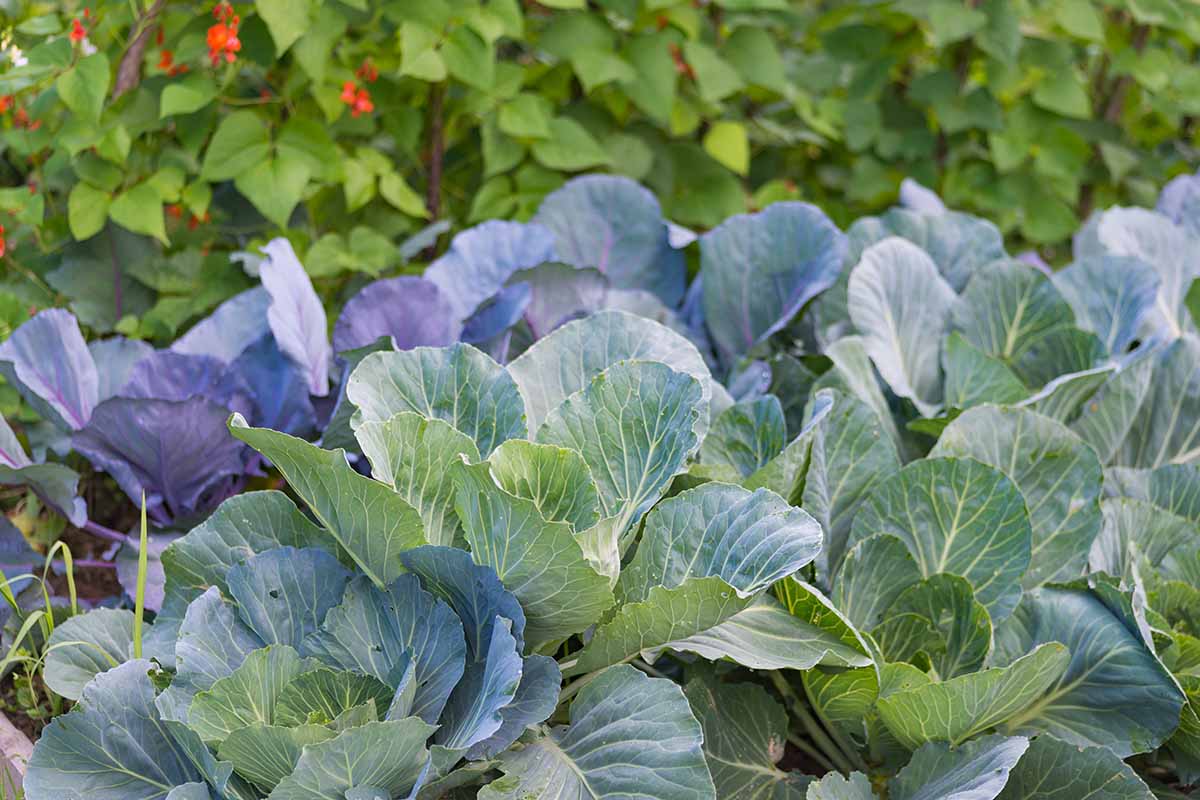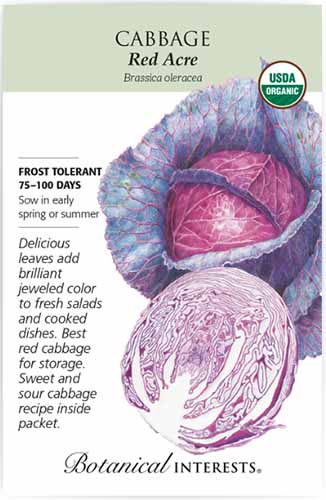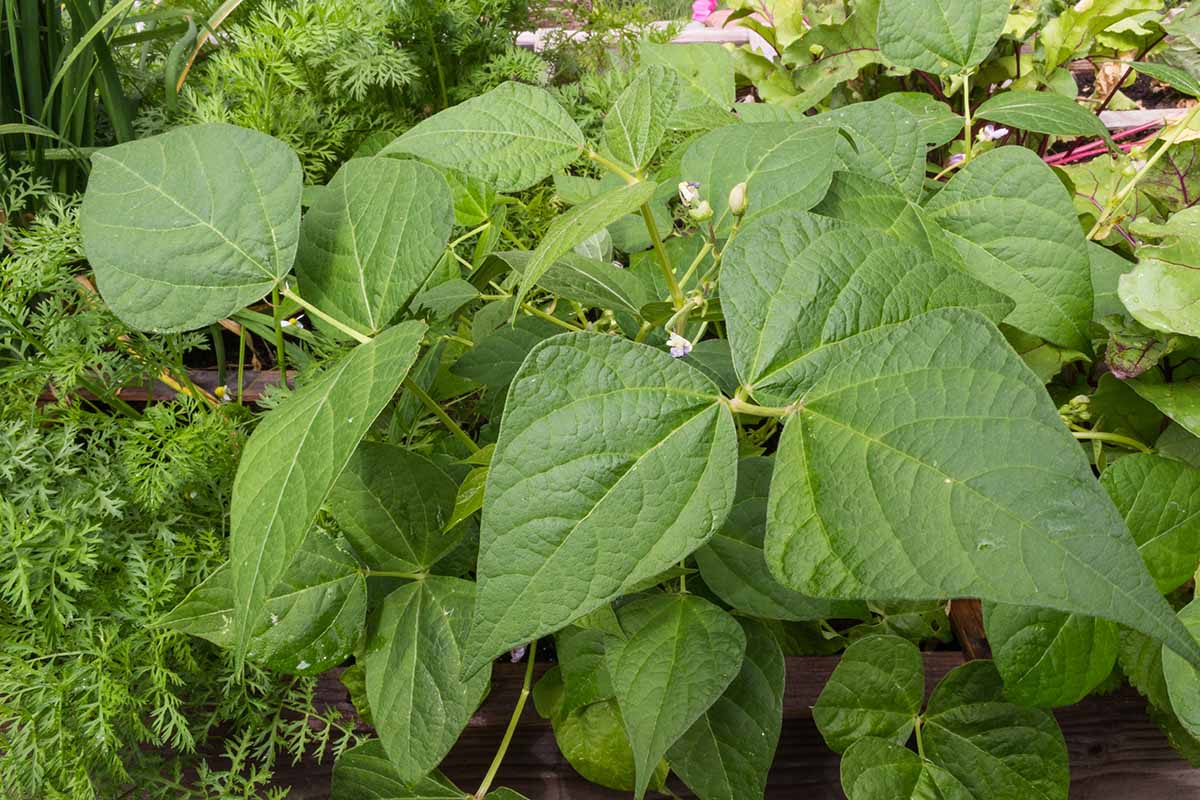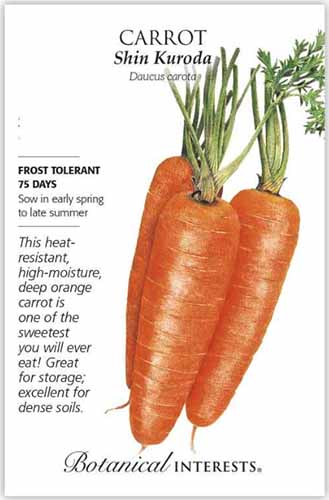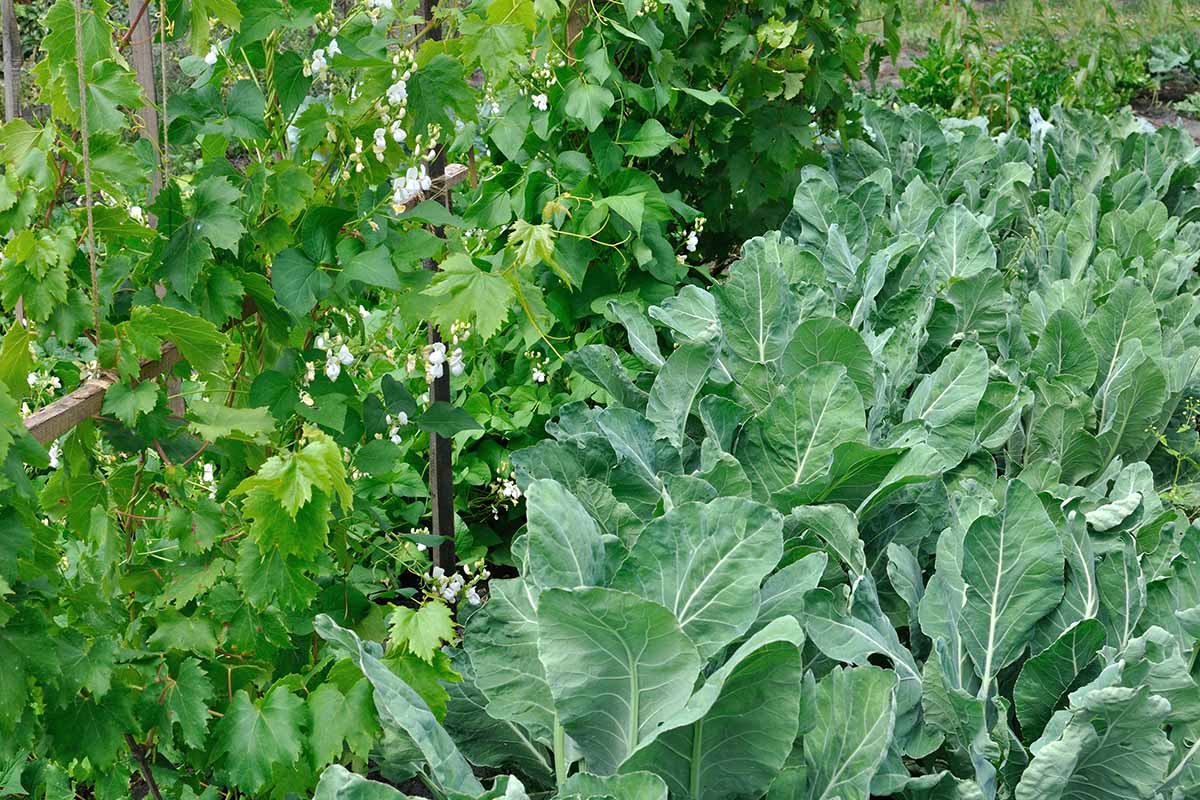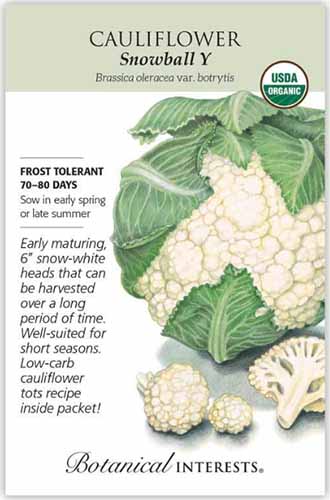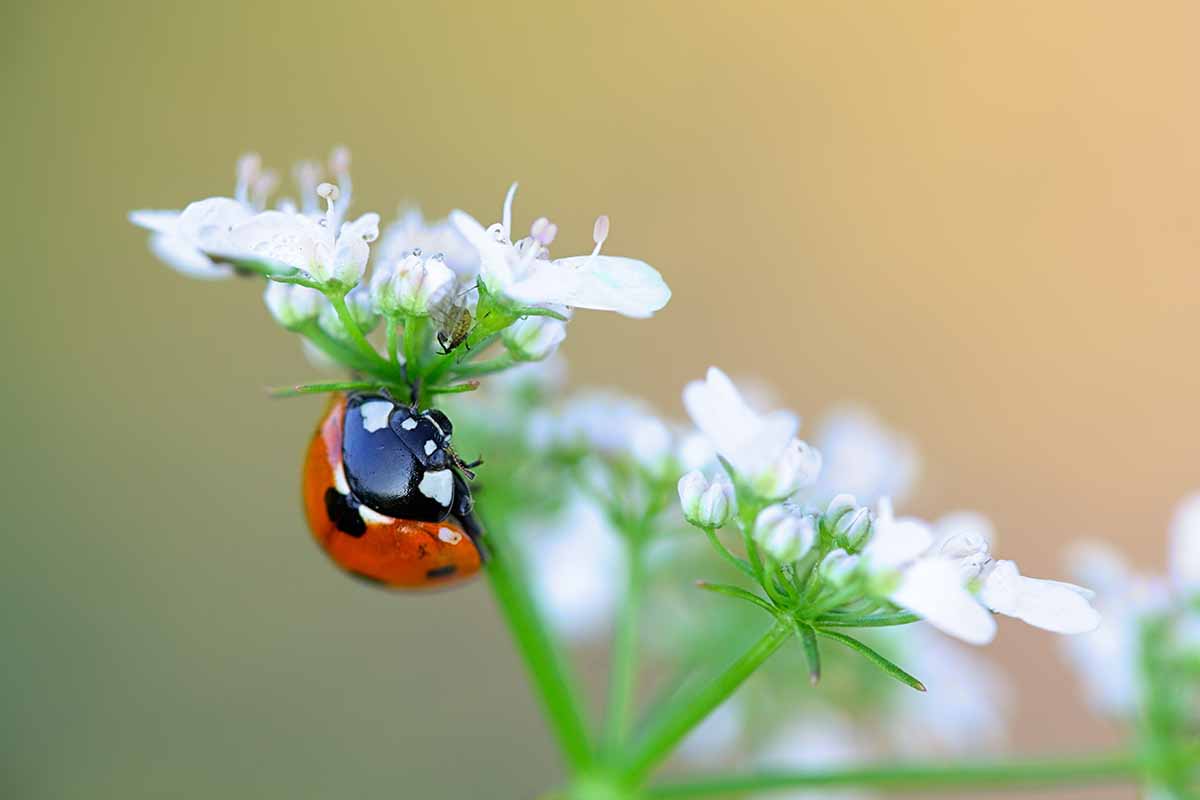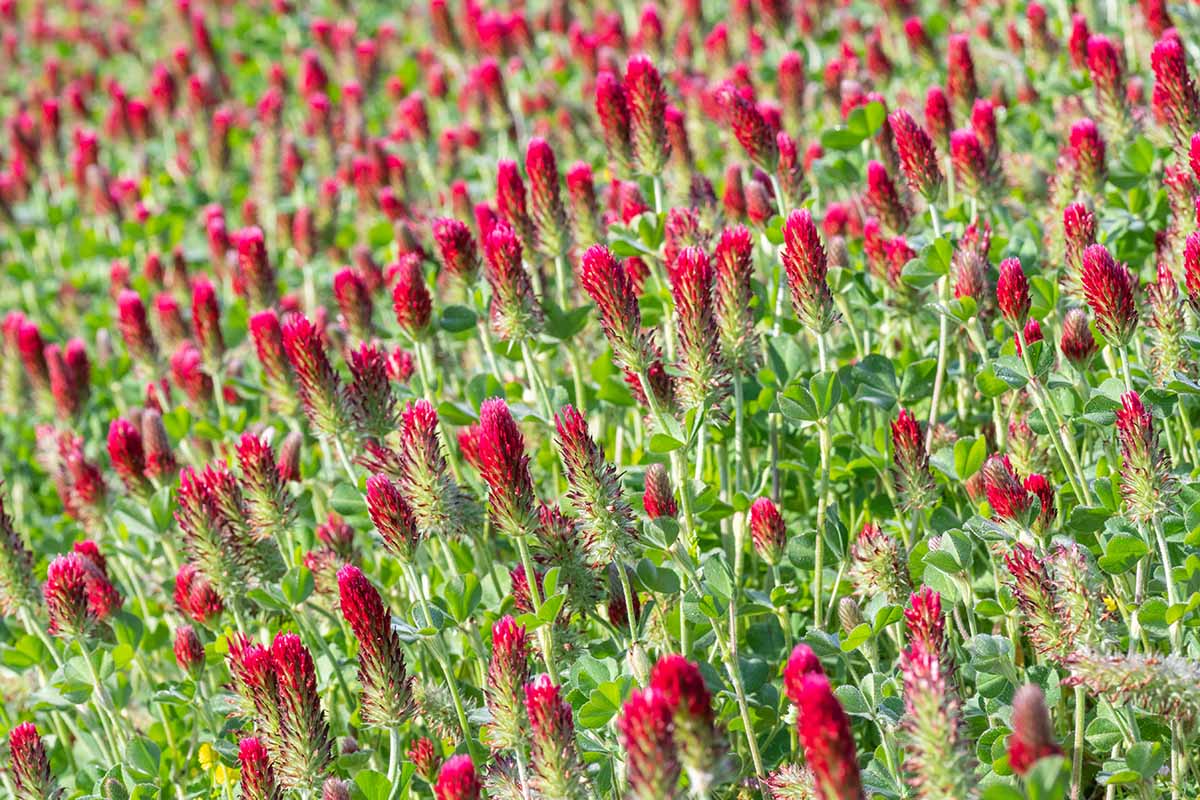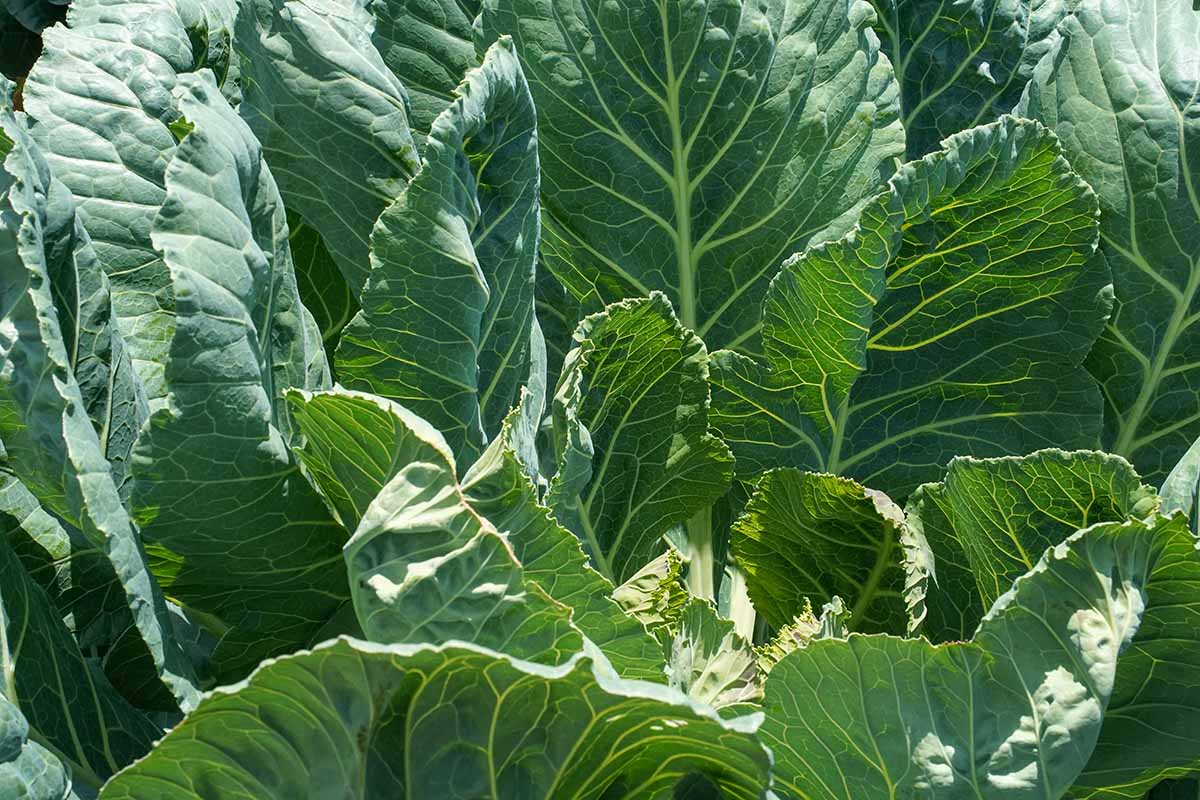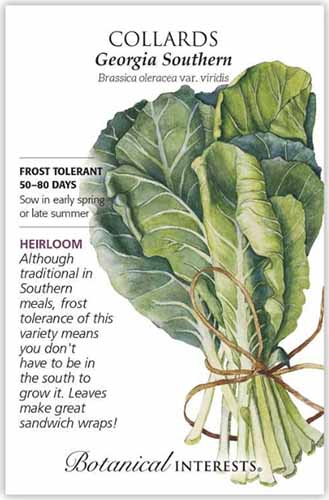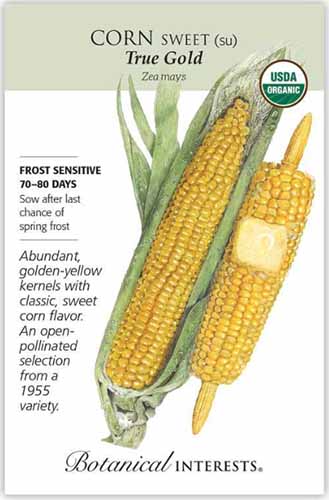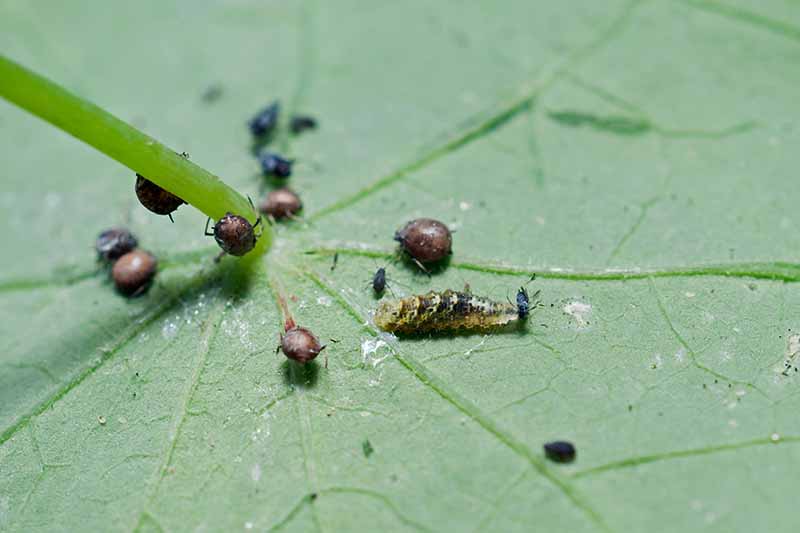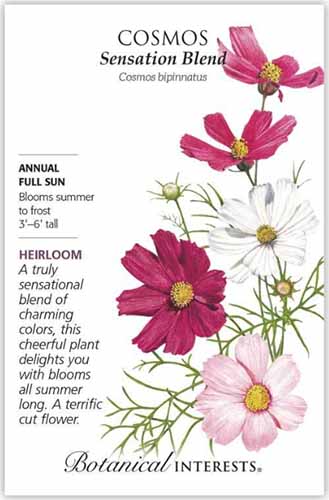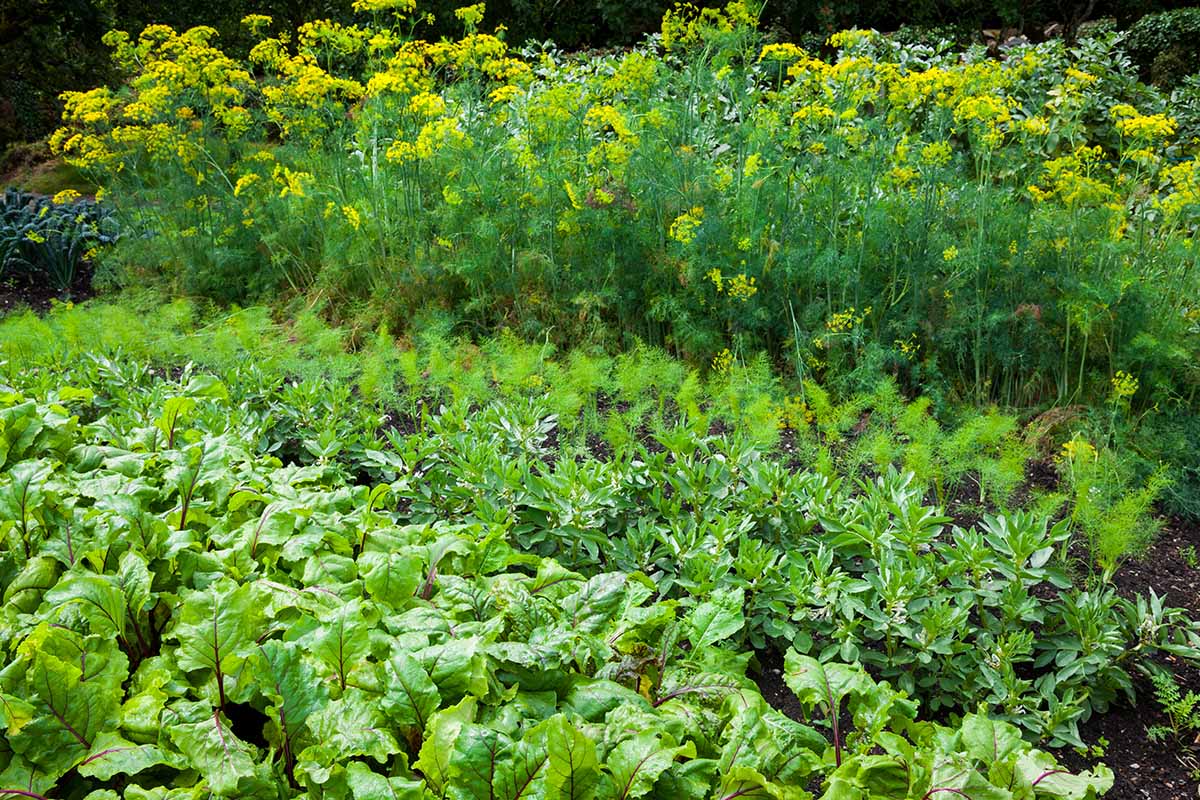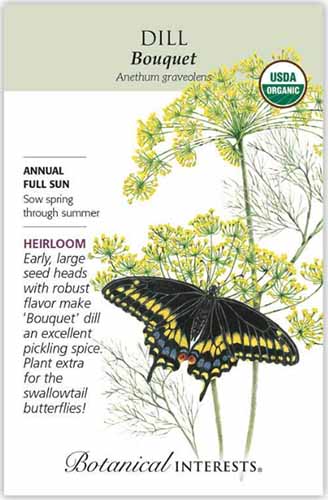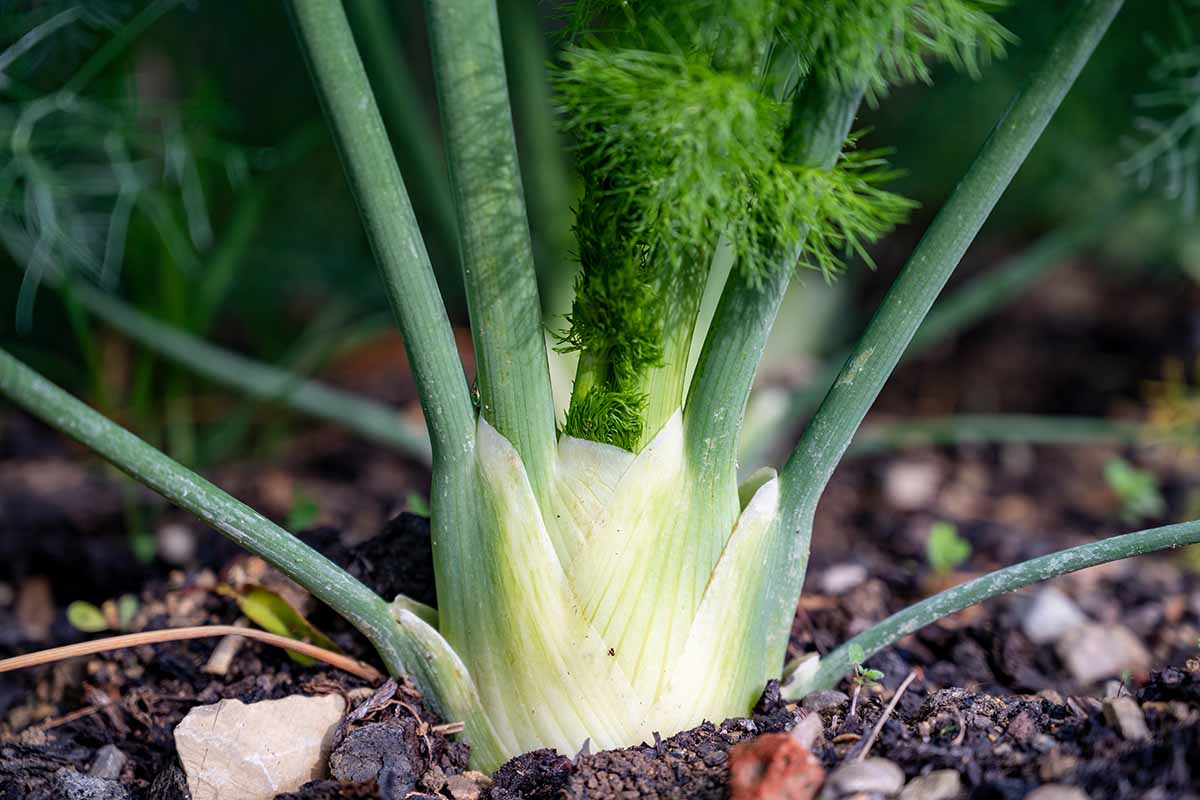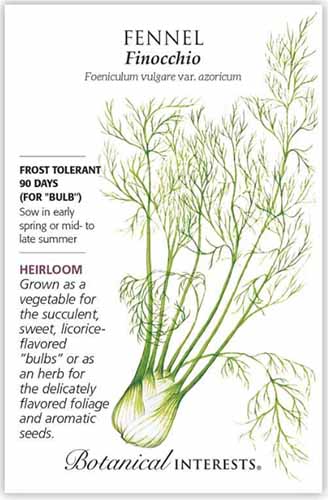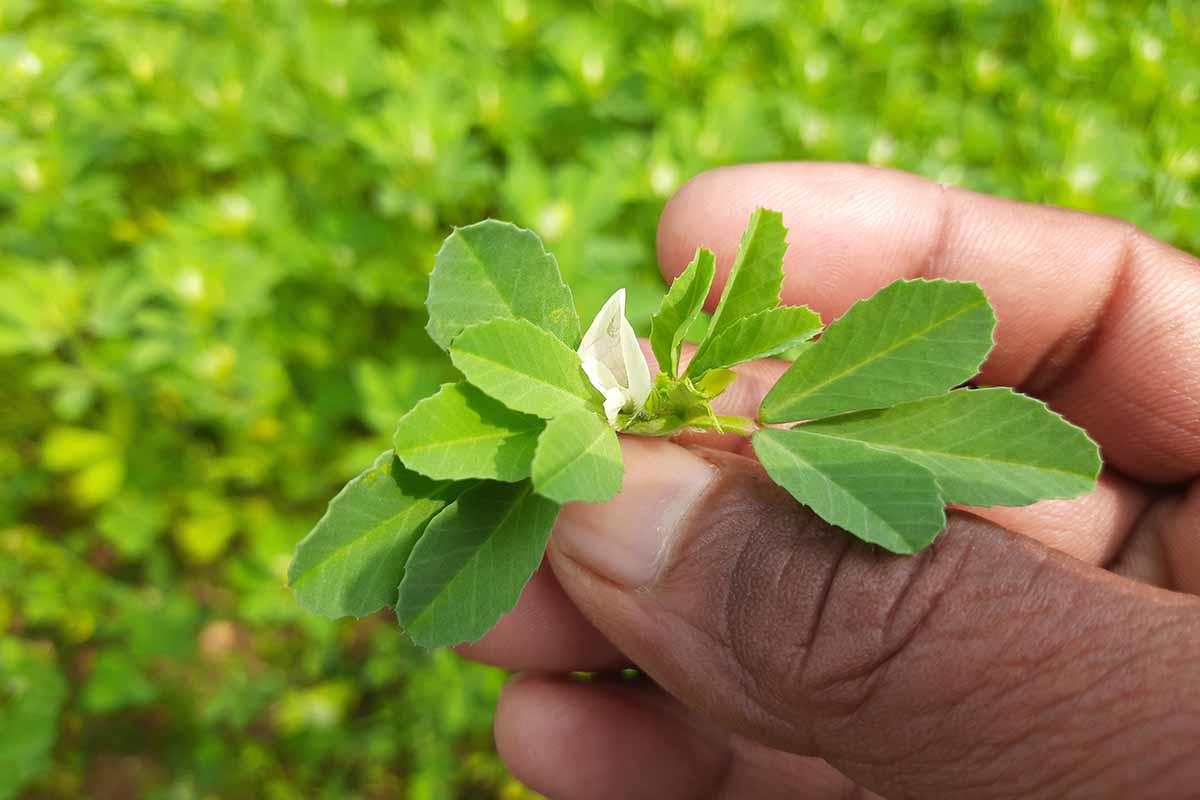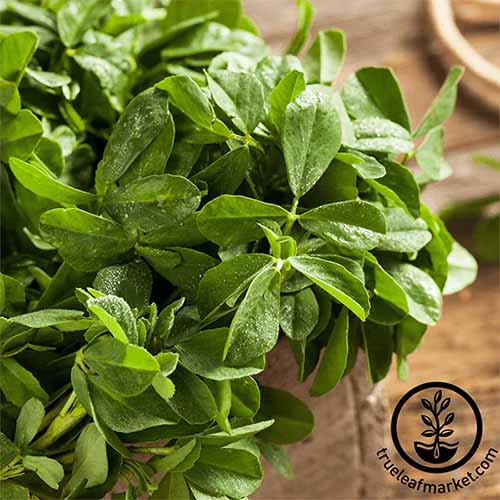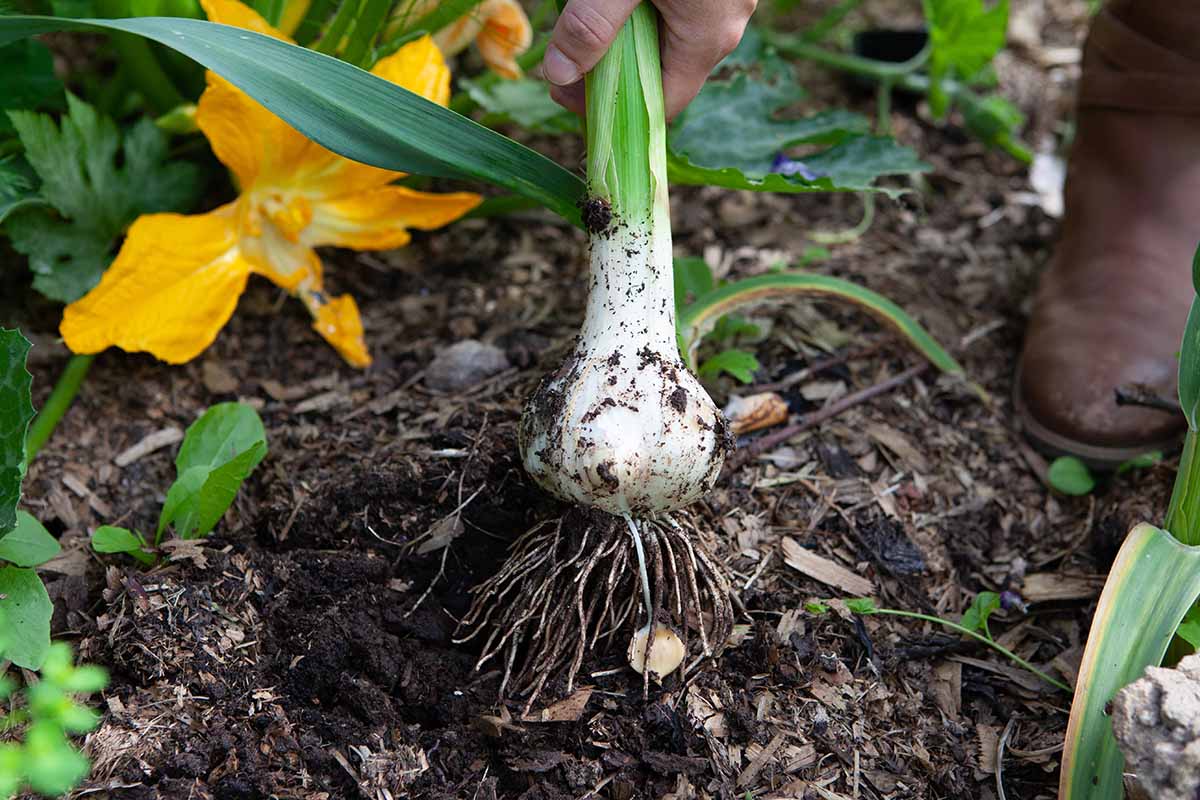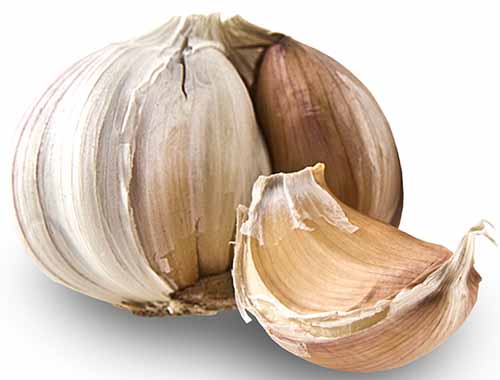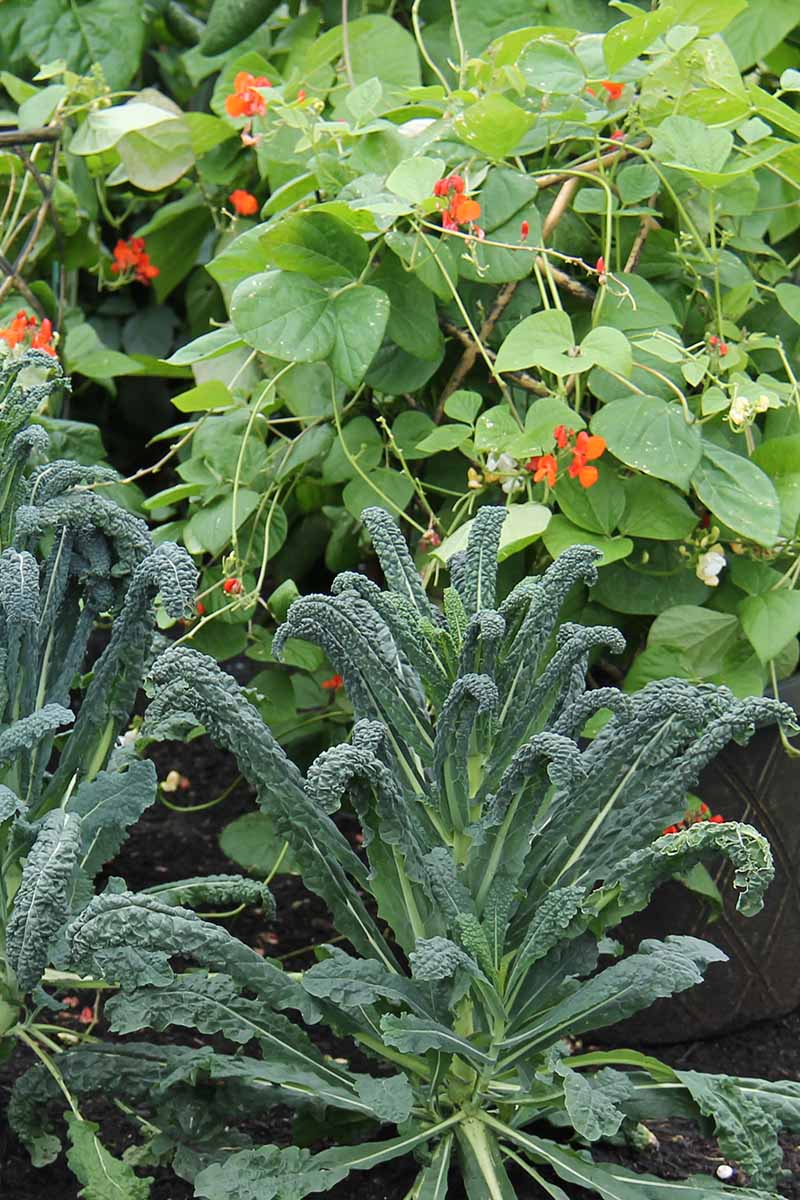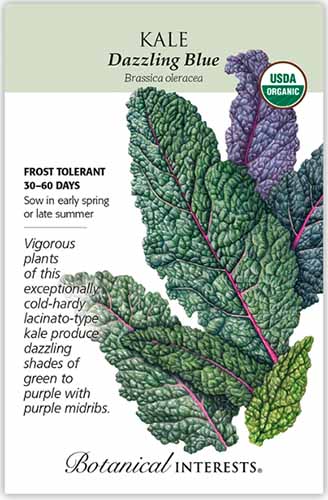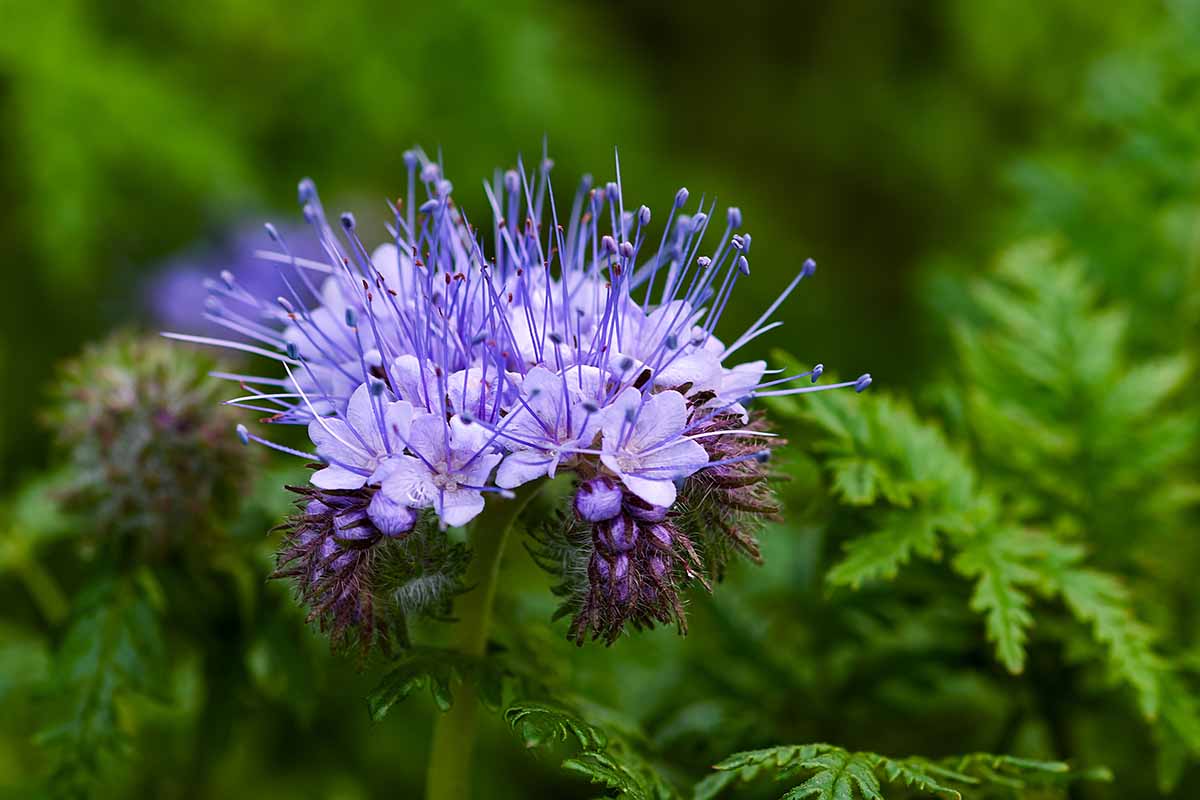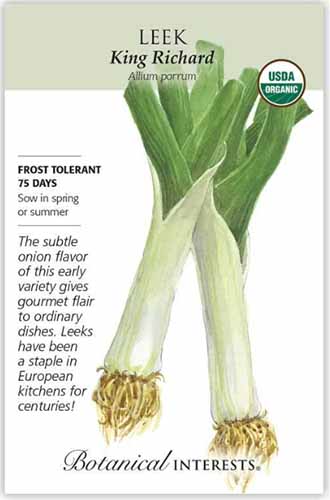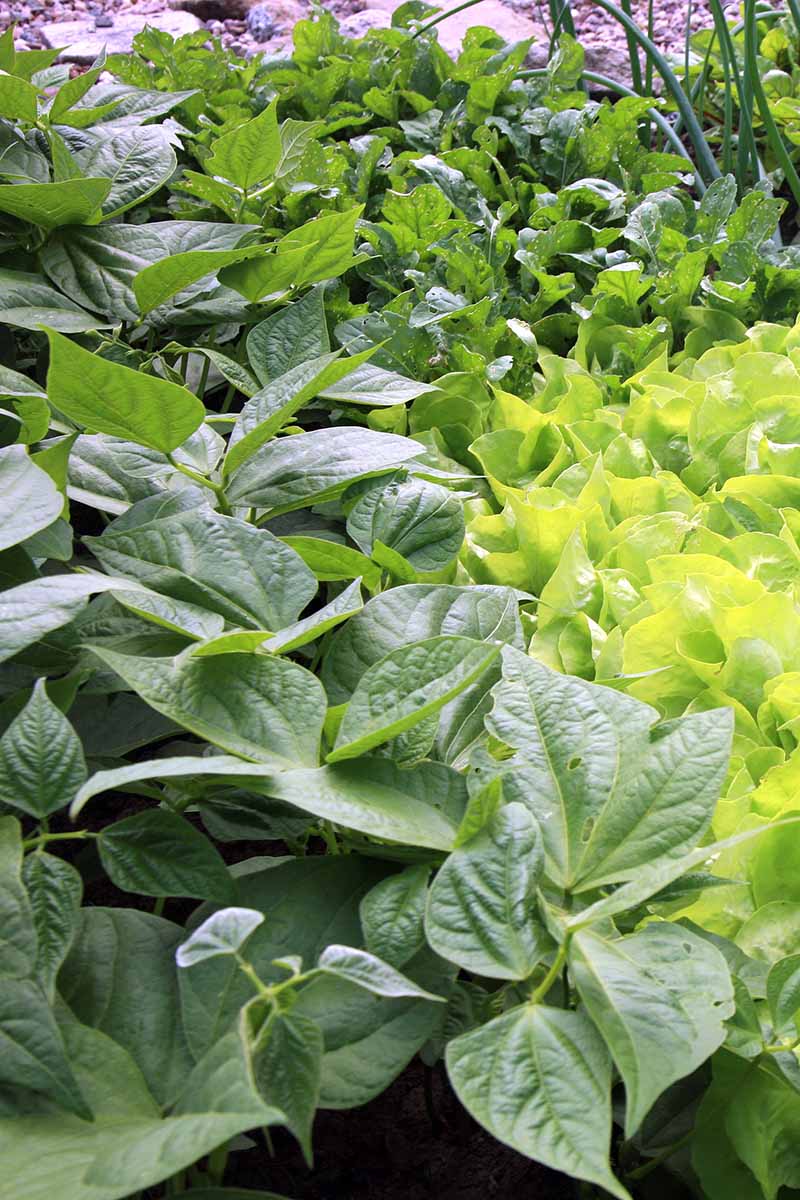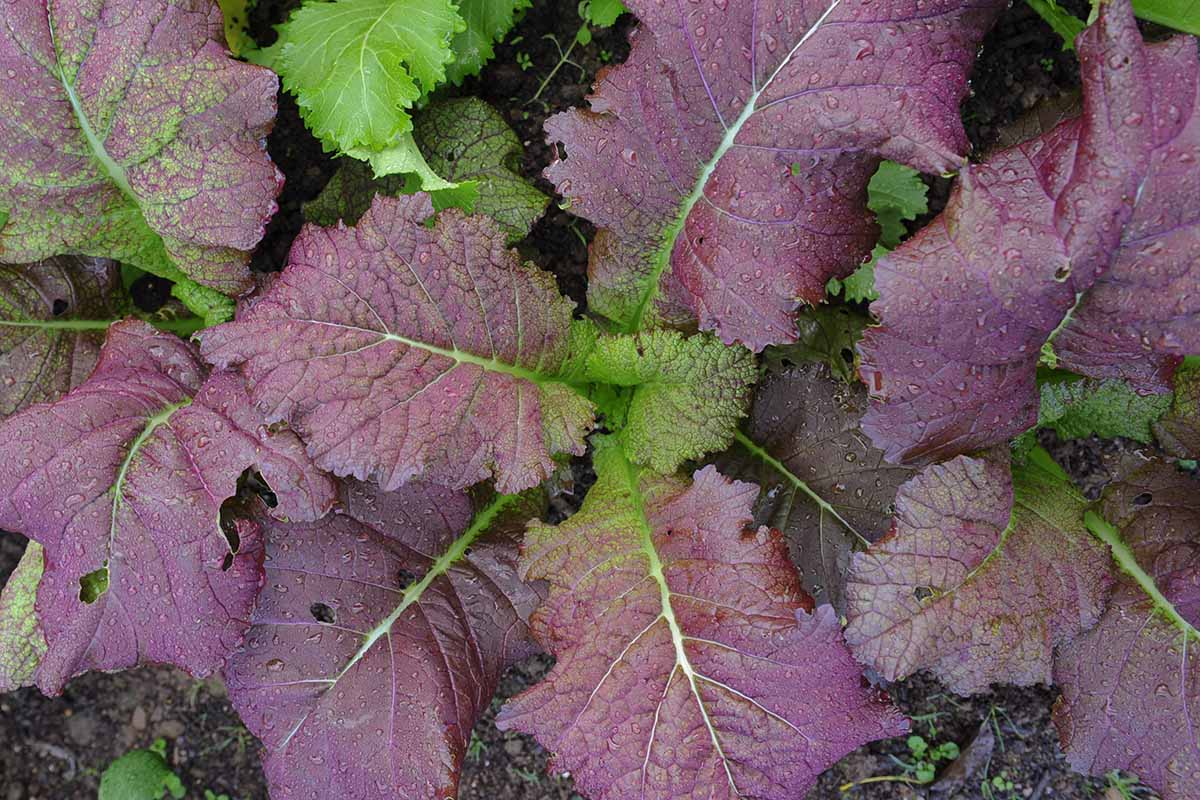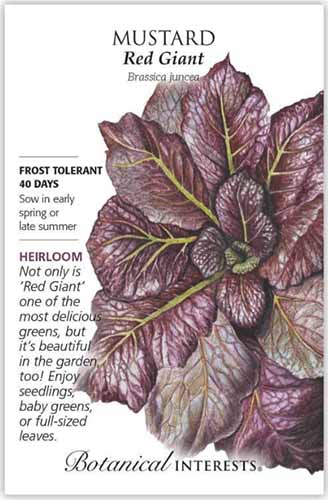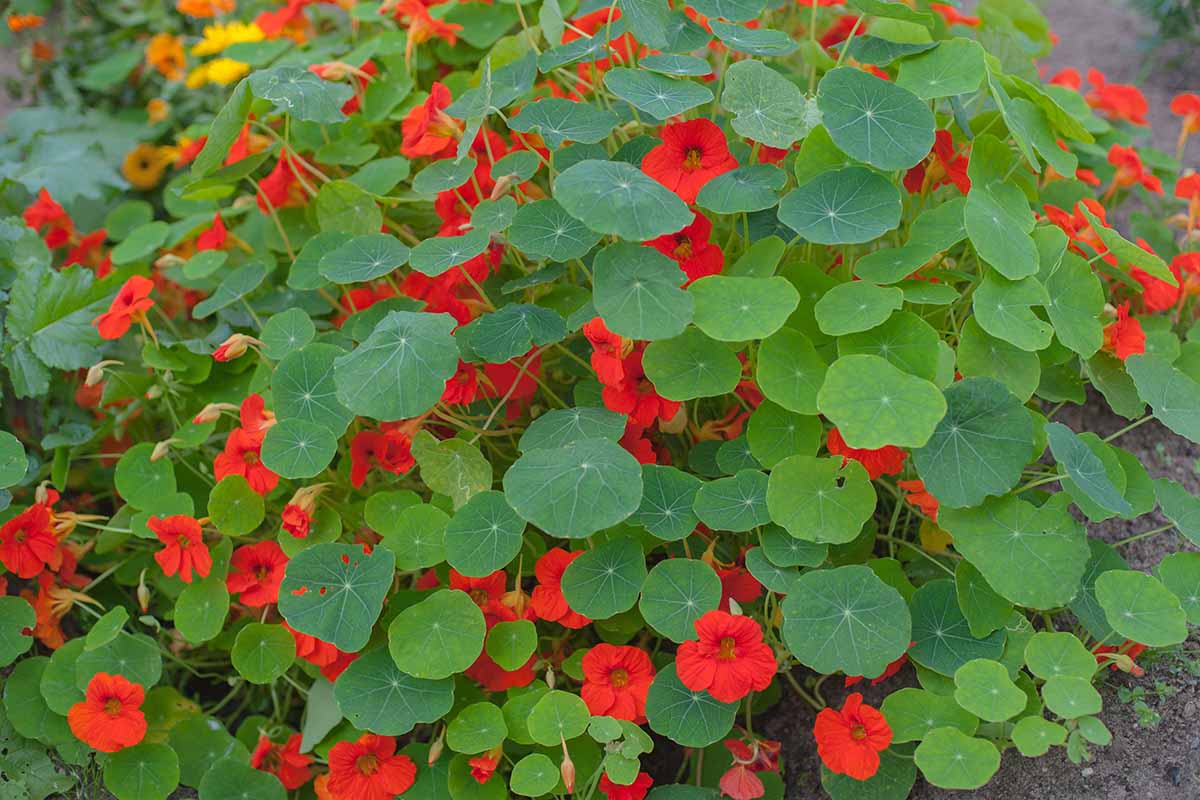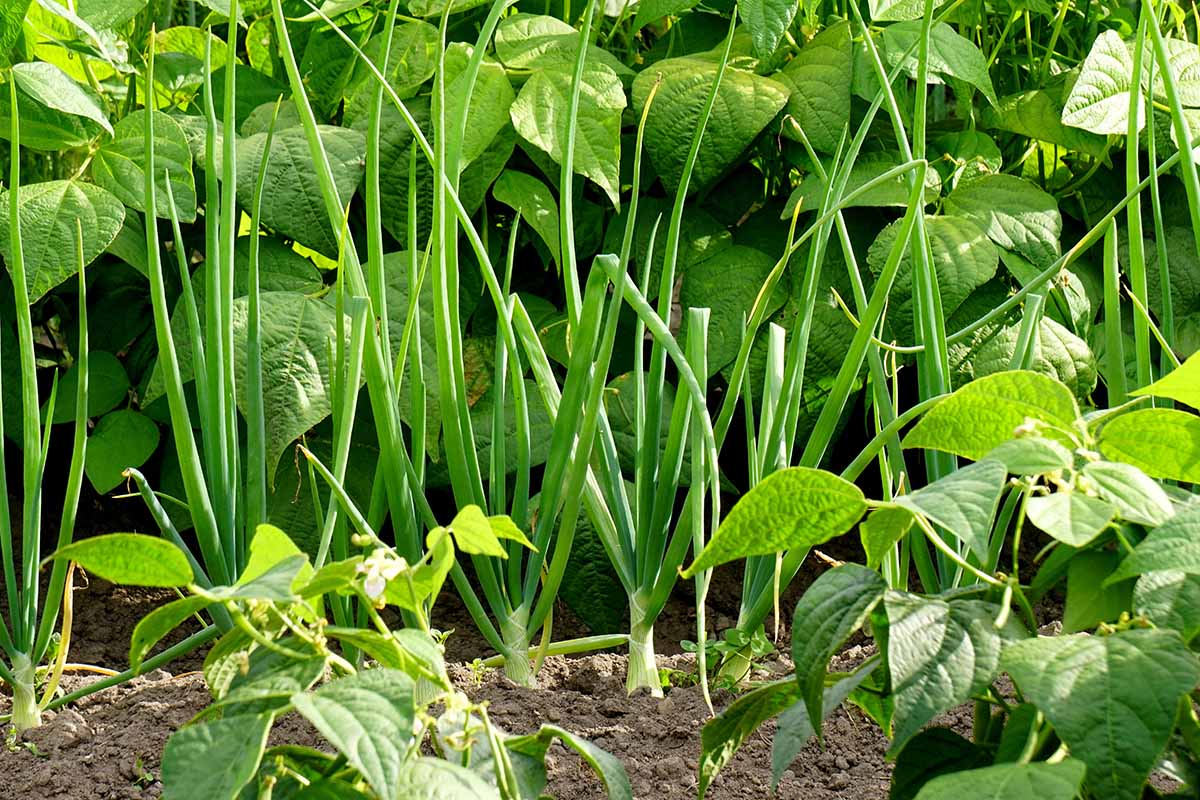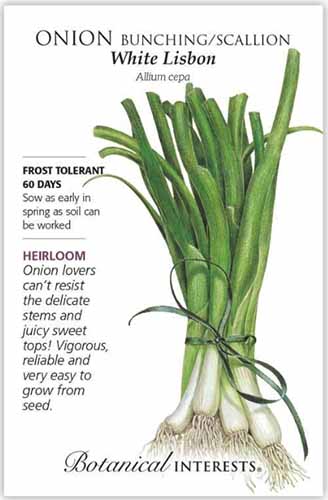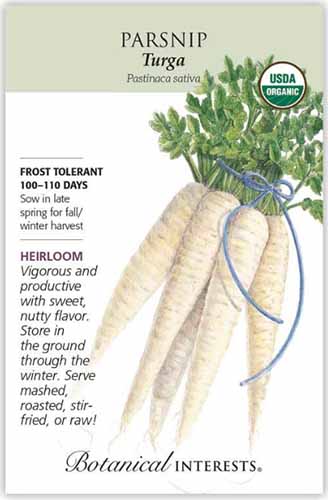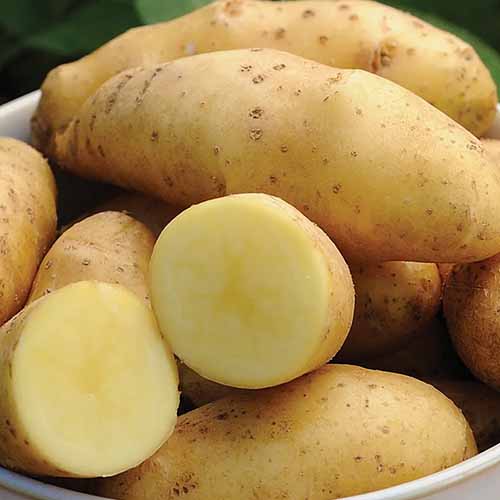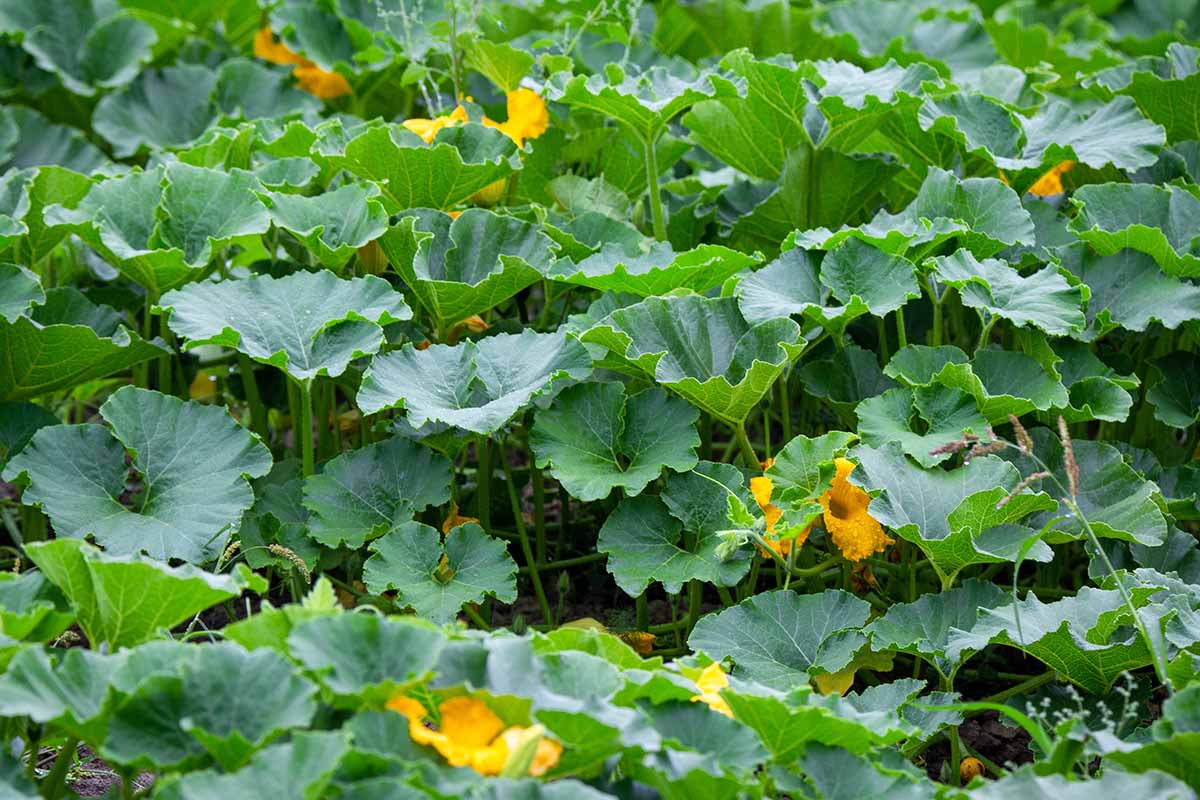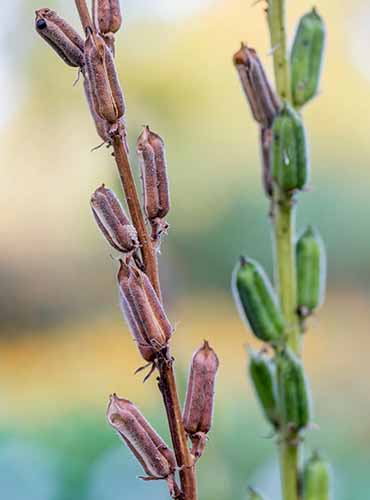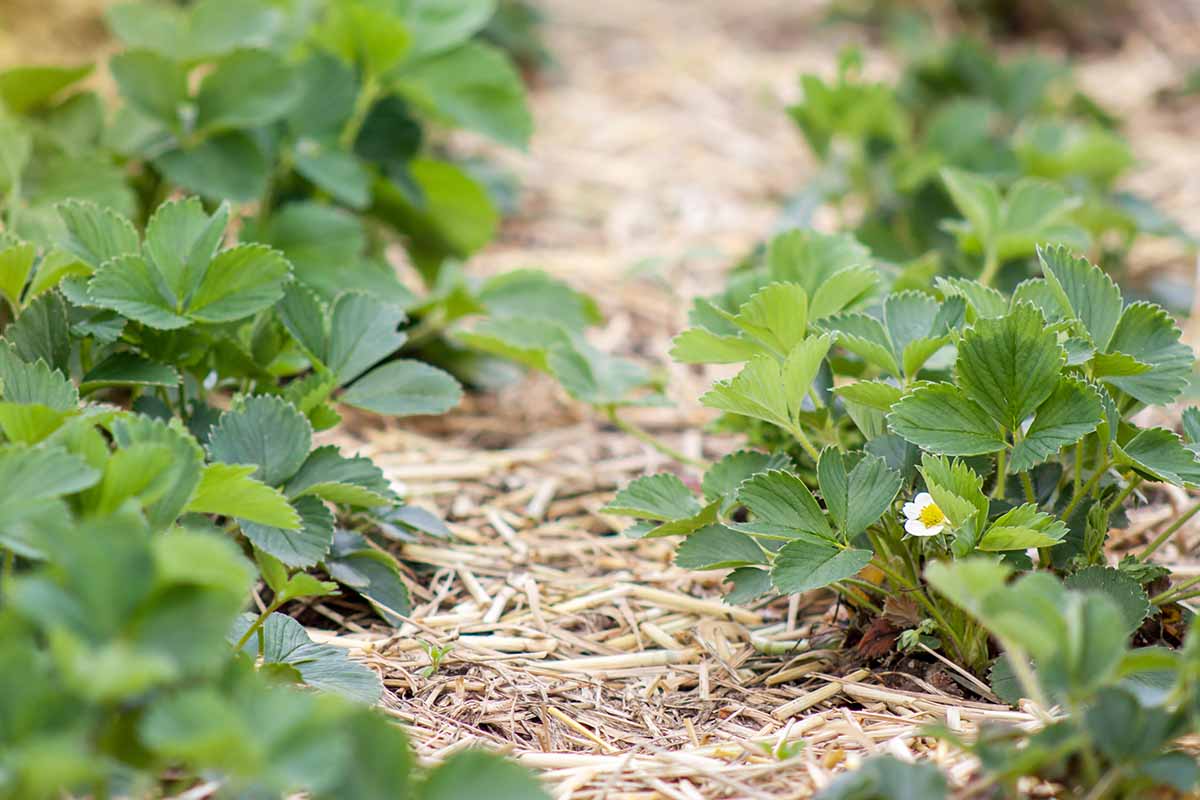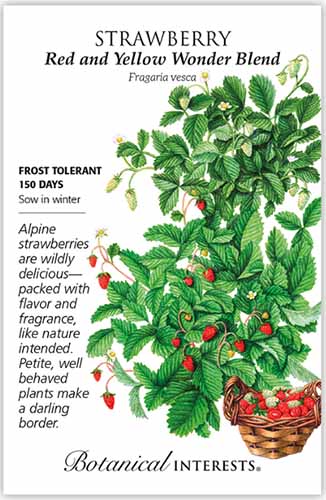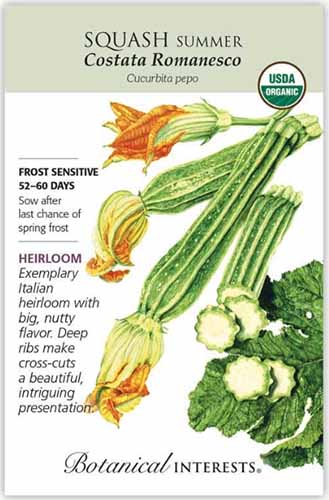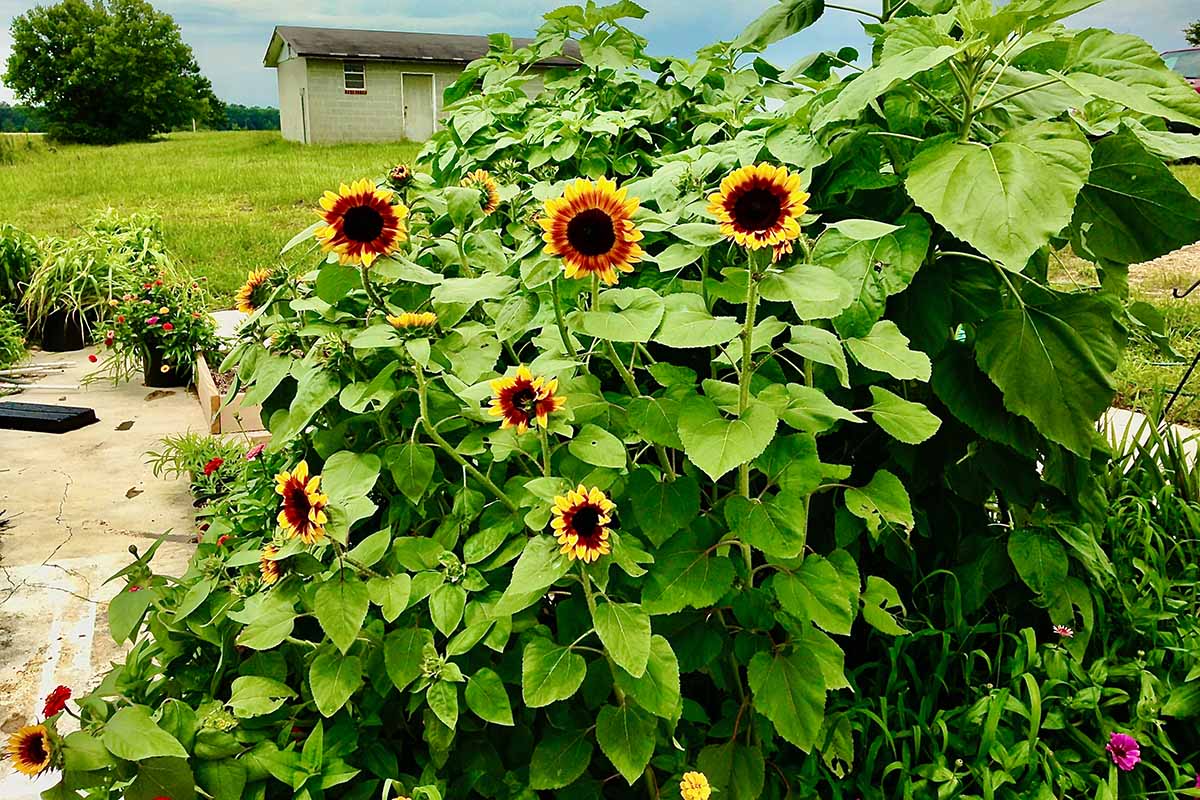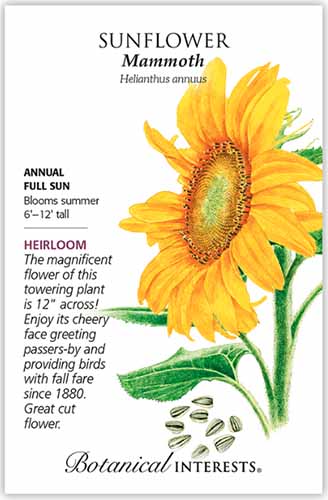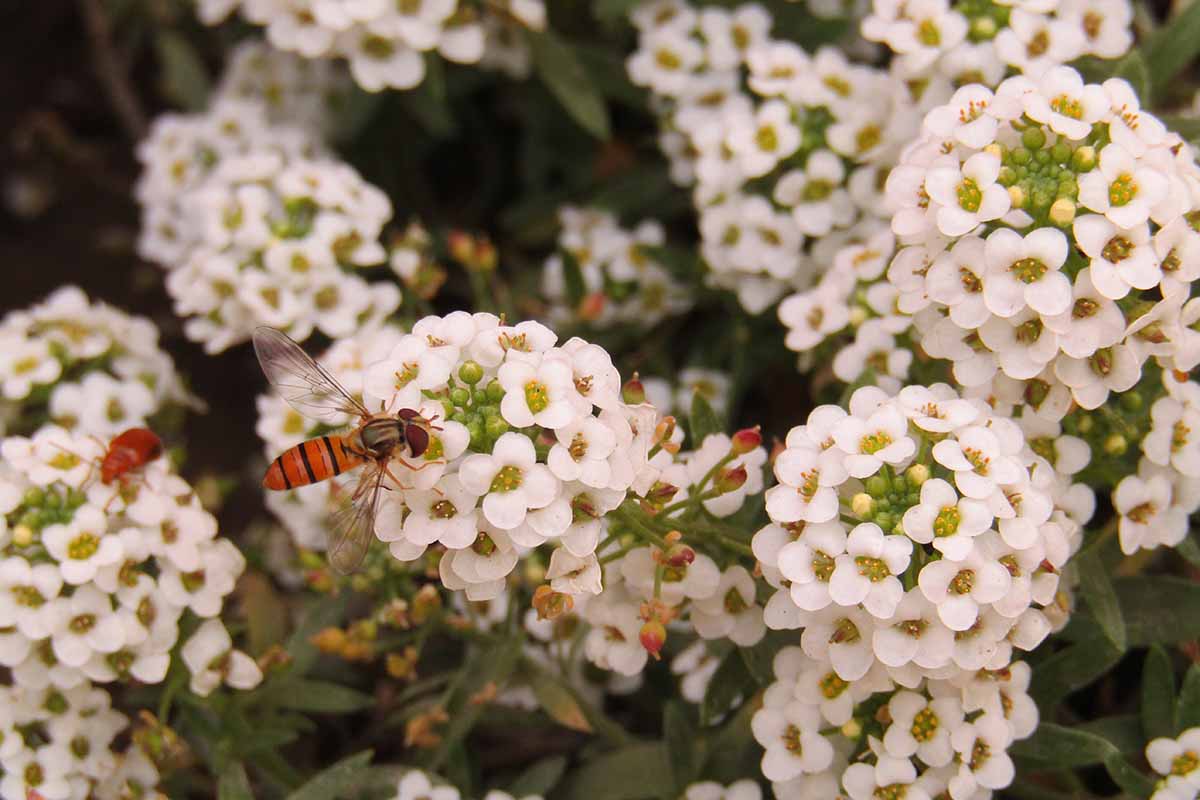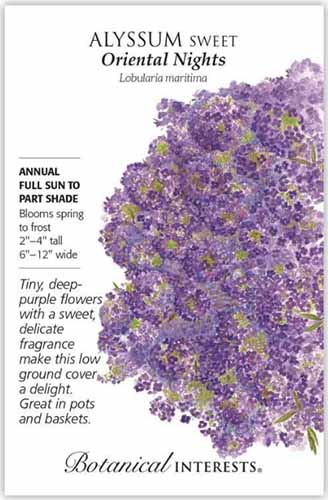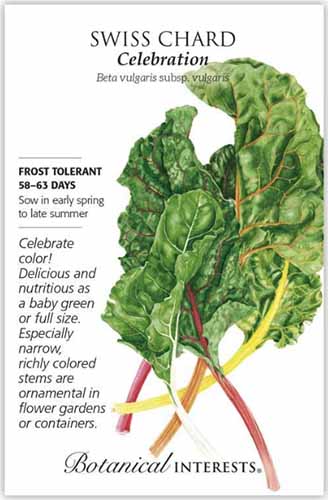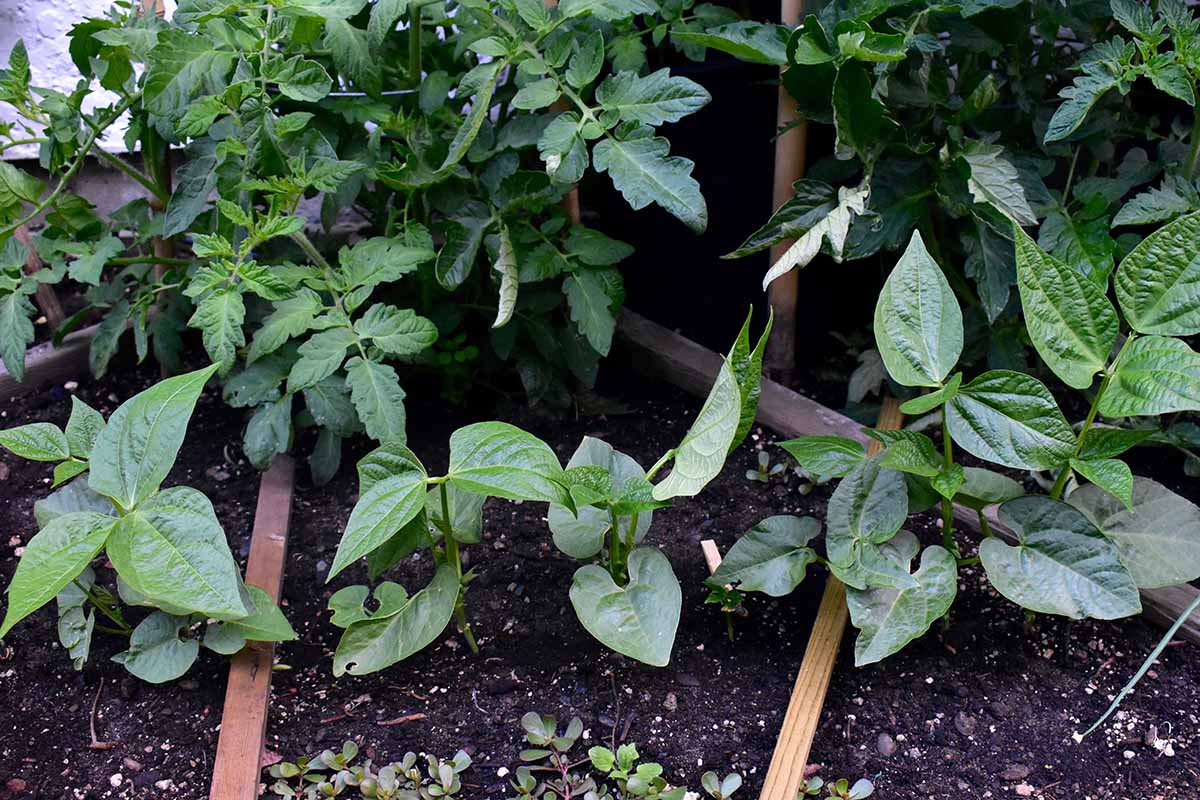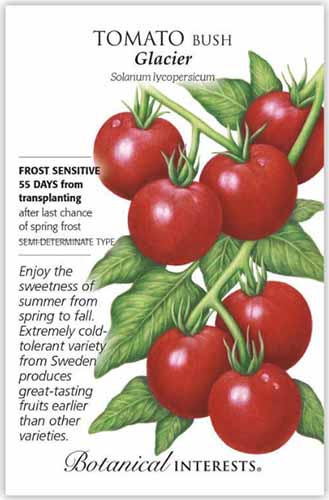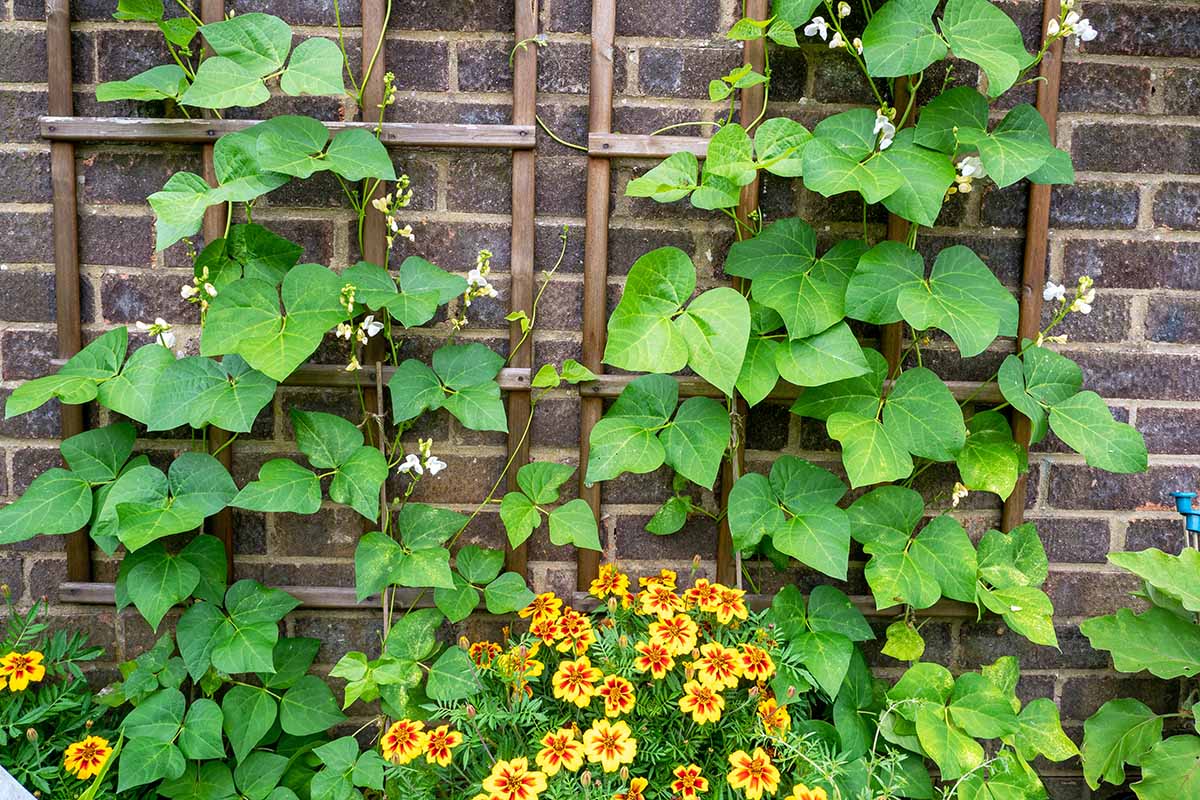So when you’re planning an organic garden, it makes sense to find the best companions for these legumes. We link to vendors to help you find relevant products. If you buy from one of our links, we may earn a commission. It might be easy to refer to a ready-made chart listing good and poor companions for a given crop, but if those pairings just keep getting handed down as “traditional” without being tested or held up to logical scrutiny, what good are they? A better approach is to understand the scientifically backed benefits of companion planting, and use science and a little logical scrutiny to judge different plant pairings. The question we should ask when considering such pairings is, exactly what benefit is one plant providing for another, if any? There can be multiple answers to that question. Good companions might help with the management of weeds, pests, or diseases. They might also attract beneficial insects to help with pollination. Some offer support or shade. And some can offer benefits by conditioning the soil. An additional advantage of companion planting is more efficient use of land, since different sorts of crops often use different soil resources in varying amounts. This means less total space is usually needed for mixed plantings than for two equivalent plantings grown in monocultures. We’re going to look at 31 plants that form good partnerships with beans and examine exactly what types of benefits each of these partnerships brings. We’ll examine these pairing and, in many cases, refer to scientific research to see how they play out in trials and studies. We’ll include research not just on common beans (Phaseolus vulgaris), but also other types of beans such as mung, garbanzo, fava, runner, and yard-long beans. In addition to pointing out some of the benefits gained with each matchup, I’ll recommend some favorite varieties, and offer suggestions for sourcing seeds so you can try out these combos in your own garden. Here’s a look at our list: If you have previously referred to traditional companion planting charts, you’ll know that you typically find that alliums, brassicas, and sunflowers are listed as antagonists to beans, meaning they make poor rather than good companions. So you might be surprised to find those plants listed here as good companions. But actually, there is plenty of research to support treating these garden plants as friends (at least in some circumstances) rather than foes. Keep reading to learn more.
1. Basil
The very best companion plants are ones that you’re excited about having around anyway. And who isn’t excited about having a fresh supply of homegrown basil? When it comes to providing a helping hand to your bean crop, basil can offer assistance in reducing pest populations. Research carried out from 2020 to 2021 in Iran studied spider mite populations in plots of monocropped kidney beans compared to plots intercropped with basil. Basil can also contribute by repelling certain pests such as pea aphids, which can damage these legumes. ‘Italian Genovese’ is an heirloom basil cultivar that has large, fragrant leaves, making it handy not just for pest management, but also for making homemade pesto. Italian Genovese Basil Seeds You can find organic ‘Italian Genovese’ basil for purchase in small or large seed packs from Botanical Interests. If you’ve never grown this fragrant herb from seed, no worries! You can learn how by reading our article on propagating basil from seed.
2. Cabbage
In many cases, companion planting – or “intercropping,” as it’s referred to in academic and professional studies – can result in better yields. That was exactly what happened when fava beans and cabbage were interplanted, as described by Sindhuja Shanmugam and colleagues in the January 2022 issue of Soil Use and Management. Compared with monocrops of the same vegetables, interplanted fields of favas and cabbage did not change the quantity of favas produced, but it did increase cabbage yields and provided more efficient land use. In a different study from 2001, yard-long beans were also found to increase the efficiency of land use when intercropped with cabbage. While these two studies don’t imply that all types of beans and brassicas form good partnerships in all situations, this evidence contradicts commonly cited lore that describes these two types of crops as antagonists. Ready to try it out for yourself? ‘Red Acre’ is an excellent cultivar of red cabbage for small gardens, maturing in 75 to 100 days. Red Acre Organic Cabbage Seeds Organic ‘Red Acre’ cabbage is available to purchase in packs of 360 seeds at Botanical Interests. Learn more about how to grow cabbage in our guide.
3. Carrots
Another efficient growing combination is to partner carrots with fava beans. Carrots share space nicely with beans, since carrots put on most of their mass underground, while your legume crop is busy producing its pods above ground. ‘Shin Kuroda’ is a variety of carrot that holds up to heat without bolting, producing tapered roots that grow well in heavy soils, helping to prevent deformed carrot roots. ‘Shin Kuroda’ Carrot Seeds You’ll find ‘Shin Kuroda’ carrots for purchase in packs of 510 seeds at Botanical Interests. Need to brush up on your carrot growing skills? We can help you with that in our guide.
4. Cauliflower
Another member of the brassica family, cauliflower can be a good partner for green bean crops in the garden. A study conducted in 2002 and 2003 found these two vegetables produced a greater yield when grown together as opposed to being grown in separate plots. In this pairing, the cauliflower profits from the nitrogen-fixing properties of its leguminous companion. ‘Snowball Y’ is a cauliflower cultivar that matures in 70 to 80 days, producing dense six- to six-and-a-half-inch heads. ‘Snowball Y’ Cauliflower Seeds You can purchase ‘Snowball Y’ in packs of 180 seeds from Botanical Interests. If you need guidance on growing cauliflower, you can find tips in our article.
6. Cilantro
For those who enjoy the taste and smell of this fragrant herb, cilantro makes an excellent all-purpose garden companion. (For those who don’t, please feel free to skip to the next option!) With its flat, umbel-shaped inflorescences, it’s a magnet for beneficial insects such as ladybugs, parasitoid wasps, and hoverflies. Luring in beneficial insects with insectary plants such as cilantro will help keep pest populations in check on your bean crop – just make sure you let it flower rather than cutting back buds before flowering, as its inflorescences will be the main attraction. ‘Leisure’ is a cilantro variety that is well-adapted to hot seasons, making it a good choice for those of us whose USDA Hardiness Zone keeps shifting. ‘Leisure’ Cilantro Seeds You’ll find ‘Leisure’ cilantro seeds for purchase in an assortment of packet sizes at Eden Brothers. Want some tips on growing this annual herb? Check out our article on growing cilantro.
7. Clover
Like beans, clover is also a leguminous nitrogen fixer. But this legume can offer the additional benefit of creating a living mulch to prevent weed competition, evaporation, and soil erosion. There are many different types of clover that can be used as garden partners – crimson clover is one that is particularly valuable, with nectar-rich blossoms that will attract pollinators. And after trying crimson clover once, you might want to keep using it over and over again. Crimson Clover Seeds You’ll find crimson clover seeds for purchase in packs of 40 grams at Botanical Interests.
8. Collard Greens
I love it when excellent garden pairings also happen to be exquisite when cooked up together – and such is the case with collard greens and dry beans. It’s hard to beat the classic vegetarian combo of dried beans, rice, and greens – unless of course you throw in a smidgeon of homegrown chili pepper! But before you’re ready to start cooking, you’ll probably want to grow them yourself, since homegrown tastes so much better. That’s what we’re all here for, right? In the garden, intercropping collard greens with beans can increase the yield of both crops, reducing the amount of land needed to produce the same amount of food. ‘Georgia Southern’ is an heirloom collard cultivar that’s well-adapted to the heat of the southeastern United States, producing mature leaves in 50 to 80 days. ‘Georgia Southern’ Collard Seeds Want to give ‘Georgia Southern’ collard greens a try? You can purchase packs of 580 seeds from Botanical Interests. Learn how to grow these classic southern leafy greens in our guide to growing collards.
9. Corn
Some garden companions provide structure or support, and that’s what corn can provide for pole beans. In the traditional Native American companion planting combination known as “the three sisters,” corn is sown first to let it get a head start, then vining beans are planted at the base of the small corn stalks and allowed to climb them in lieu of a trellis. The corn benefits from this pairing as well since, as a heavy user of nitrogen, it will reap the benefits of extra nitrogen in the soil provided by its leguminous neighbor. This combination is particularly favorable for sweet corn when fava beans, as non-vining legumes, are used in the pairing. As Jessica Walliser explains in her companion planting book, “Plant Partners,” favas are a nitrogen-fixing powerhouse, which – when sown ahead of sweet corn – do a particularly good job of sharing their nitrogen. Be sure to check out our review of “Plant Partners” by Jessica Walliser. Walliser’s book is a must-have reference on the subject of companion planting! ‘True Gold’ is an open-pollinated cultivar of sweet corn that grows seven to nine feet tall and produces a crop of sweet, tender, eight- to nine-inch ears that mature in 70 to 80 days. ‘True Gold Sweet Corn Seeds You’ll find organic ‘True Gold’ sweet corn for purchase in packs of 45 seeds at Botanical Interests. And if you’re looking for more ideas on buddies to grow with corn, you’ll find nine recommendations in our article.
10. Cosmos
Cosmos flowers are another superb all-purpose companion that will help your garden veggies live long – and prosper. These beautiful annual flowers will bring all sorts of beneficial insects calling to forage from their blooms – such as hoverflies, insects that are cleverly disguised to look like bees. If you provide food for Mom and Dad Hoverfly in the form of flower nectar, their babies (okay, call them larvae, if you prefer) can make a feast of bean pests such as aphids and thrips. Just be sure to choose cultivars with simple flowers rather than doubles to make life easier for visiting beneficials. You’ll find a delightful selection of cosmos cultivars to choose from in our article. One of the most common (but no less enchanting) cosmos cultivars available is ‘Sensation,’ usually offered as a blend of colors in white, pink, rose, and magenta. ‘Sensation’ grows to be three to six feet tall and bears simple flowers that are three to four inches wide. ‘Sensation’ Blend Cosmos Seeds ‘Sensation’ blend cosmos is available for purchase in packs of 36 organic seeds, or 128 conventional seeds at Botanical Interests. Get tips on growing beautiful cosmos flowers in our article.
11. Dill
And while you’re building a collection of insectary plants to attract beneficial insects and pollinators, throw some dill seeds into the mix too. With wide, umbel-shaped flowers, dill offers perfect landing pads for wasps, which will help tilt the balance in your garden towards the positive through pollination and pest predation. This combo will also benefit the dill. When intercropped with beans, dill’s essential oils are increased, making the plants more fragrant. ‘Bouquet’ is an early-blooming dill variety, meaning it can provide a source of spring forage for garden visitors that arrive on six legs and two pairs of wings. And once your dill crop has gone to seed, you can use the seed heads to flavor pickles made from homegrown cucumbers – or save the seeds to sow next year. ‘Bouquet’ Dill Seeds You can find organic ‘Bouquet’ dill seeds for purchase in three-gram packs at Botanical Interests. To learn about additional garden companions for dill, read our article.
12. Fennel
If companion planting with fragrant herbs sounds like just what you had in mind for your garden plan, dill’s garden lookalike, fennel, also makes an excellent pairing. It can be enjoyed for both its fragrant leaves and its tasty “bulbs.” In a Brazilian trial from 2011, growing fennel with cowpeas and P. vulgaris resulted in both an increase in yield and in land efficiency. And what’s more, the essential oil content of the fennel was increased thanks to its leguminous neighbors, making this herb even more flavorful. ‘Finocchio’ fennel produces succulent three- to four-inch bulbs, with plants reaching two to four feet tall. ‘Finocchio’ Fennel Seeds You’ll find ‘Finocchio’ fennel in packs of 120 seeds at Botanical Interests. Are you new to growing this veggie masquerading as an herb? Learn how to grow tasty fennel bulbs with the help of our guide.
12. Fenugreek
Most often used culinarily for its fragrant seeds, which are ground or used whole as a spice, in the garden fenugreek can provide pest control services for your beans. When experiments from 2012 to 2014 in Egypt used fenugreek as a plant partner for fava beans, populations of black legume aphids were “significantly reduced.” Fenugreek may seem like an unusual choice to grow in the garden if it’s not already a familiar part of your repertoire, but it’s not hard to grow from seed. Fenugreek Seeds You can purchase organic fenugreek seeds in an assortment of package sizes from True Leaf Market. Learn everything you need to know about growing fenugreek right here.
13. Garlic
As an allium, you might be surprised to find garlic listed as a good neighbor for this legume crop, since most companion planting charts list alliums and beans as antagonists. However, rather than repeating traditional companion planting lore without checking the validity behind it, let’s look at what the science says. In a paper published by Khatere Mohammadi and colleagues in the January 2021 issue of Experimental and Applied Acarology, or the study of mites and ticks, the combination of green beans and garlic reduced populations of spider mites by attracting pest predators and increasing overall insect biodiversity. But that wasn’t the only advantage – this pairing also resulted in more efficient land use compared to monocropped plantings of the same veggies. ‘Elephant’ is a type of garlic that grows to gigantic proportions, reaching four to five feet tall, and producing one to six supersized cloves per bulb that have a mild flavor. ‘Elephant’ Garlic Bulb You can purchase ‘Elephant’ garlic bulbs for planting at Botanical Interests. Get more ideas for good neighbors to grow side by side with garlic in our article. And if you need growing tips, you’ll find those here.
14. Kale
As a nitrogen-hungry leafy green, kale will profit from being grown with nitrogen-fixing legumes like beans. But that’s not the only advantage – this pairing can also help with weed management. Compared to growing these two veggies in separate plots, an intercropped plot of kale and beans tested in Kenya in 1993 and 1994 resulted in less redroot pigweed (Amaranthus retroflexus), a pesky weed that can be problematic on farms and in gardens. This intercropped pairing also provided more efficient land use. (Are you noticing a pattern yet?) ‘Dazzling Blue’ is a cultivar of lacinato kale that has excellent cold hardiness and reaches two to four feet tall. Blueish-green leaves with purple midribs are ready to harvest in 30 to 60 days. ‘Dazzling Blue’ Kale Seeds You’ll find ‘Dazzling Blue’ kale for purchase in packs of 150 seeds at Botanical Interests. And if you want to explore more kale plant buddies, be sure to read our article. Learn more about how to grow kale in our guide.
16. Lacy Phacelia
Commonly known as “lacy scorpion weed” or “lacy phacelia,” Phacelia tanacetifolia is a relative of borage and comfrey that is often used in organic gardening as a cover crop or green manure. Lacy phacelia is a wildflower native to southwestern North America, and is a big hit with pollinators. In a study conducted during 2008 and 2009 in Poland, lacy phacelia was grown with favas to study the effect of hoverflies on aphid populations. Pairing this flower with the legume crop brought about an increase in hoverflies (also known as syrphid flies), which reduced the presence of aphids and decreased damage caused by aphids. Lacy phacelia is a drought-tolerant and fast-growing annual that germinates best when soil temperatures are between 40 and 68°F. Lacy Phacelia Seeds
17. Leeks
Alliums such as leeks are frequently recommended as all-purpose companion plants because the strong smell of their foliage may waylay some pests. A study conducted in 2009 in Sri Lanka interplanted common beans with leeks to study the repellent property of these alliums on bean flies (Ophiomyia phaseoli), a type of root maggot that can target legume crops. The researchers found the leeks had a positive effect on the overall yield, reducing plant death from bean fly infestations during both dry and wet growing seasons. ‘King Richard’ is a leek variety that will mature in 75 days, producing extra-long white sections, the prized part of this allium crop. ‘King Richard’ Leek Seeds You’ll find ‘King Richard’ seeds available from Botanical Interests. New to growing leeks from seed? Learn to propagate and grow leeks in our guide.
18. Lettuce
As heavy feeders, lettuce crops will take advantage of the extra nitrogen supplied by a pairing with beans. And this combo also makes more efficient use of growing space. A field trial conducted from 2009 through 2010 in Serbia tested intercropping green beans with radishes and lettuce. The intercropped veggies netted a higher yield than those grown as a monoculture. There’s also another way you can take advantage of this pairing – try planting tall favas or trellised pole beans to the south of your lettuce crop to extend your lettuce growing season. Arranged this way, the legumes will provide shade to help the lettuce stay cooler and delay bolting during the dog days of summer. ‘Ice Queen’ is an heirloom variety of lettuce that holds up well to heat. Also known as ‘Reine des Glaces’ this crisp and refreshing cultivar reaches maturity in 62 days. ‘Ice Queen’ Lettuce Seeds You’ll find ‘Ice Queen’ seeds for purchase in packs of 680 seeds at Botanical Interests. Learn more about how to grow lettuce in our guide.
19. Marigolds
Marigolds are a commonly cited all-purpose garden companion, particularly in controlling root-knot nematode infestations. But this frequently grown garden flower excels at helping to manage other pests as well. A field study conducted in Thailand in 2018 tested interplanting yard-long beans with marigolds. In the study, the presence of marigolds increased insect biodiversity, which in turn reduced the number of cowpea aphids present on the legume crop. While all marigold cultivars will attract beneficial insects, those with simple (rather than double) flowers will do the best job of actually providing them with forage. ‘Court Jester’ is a marigold variety with simple flowers and a stunning pattern – its petals are striped burgundy and gold. This heirloom cultivar grows to 20 inches tall. ‘Court Jester’ Marigolds You’ll find ‘Court Jester’ marigold seeds for purchase in an array of package sizes at Eden Brothers. These annual flowers really do make great garden buddies – learn more about how to grow marigolds in our guide.
20. Mustard
Mustard greens are leafy, cruciferous vegetables with a piquant flavor that can be included in your garden rotation in place of or in addition to kale, bok choy, and collards. And like the other brassicas mentioned here, mustard greens also make a good pairing with beans. A study from 1980 to 1982 in India examined intercropping garbanzo beans (also known as chickpeas) with mustard. The researchers involved in this study found that intercropped plots performed better than those grown alone – and they performed best when grown at a rate of one mustard plant for every two chickpea plants. There are many different types of mustard greens – my personal favorite is ‘Red Giant,’ a cultivar that is as gorgeous as it is tasty. This mustard grows up to two feet tall, with large, maroon leaves ready to harvest in 40 days. ‘Red Giant’ Mustard Seeds ‘Red Giant’ mustard is available for purchase in packs of 670 seeds at Botanical Interests. Learn more about growing mustard greens in our article.
20. Nasturtiums
Nasturtiums, a short-lived, flowering perennial typically grown as an annual, can benefit your bean crop in a couple of different ways. Their spreading growth habit can serve as a living mulch around bean plants, helping to keep weeds at bay and preventing soil erosion. But nasturtium flowers also do an excellent job of attracting pollinators. Bees like crawling inside their big blooms – and while stopping at your nasturtiums, they may then head over to visit your bean crop as well. Although these legumes are self-pollinating, bees can help to improve pollination rates. Plus, since nasturtiums can grow in part shade, they won’t mind being slightly shaded by your bean crop. And pollinators aren’t the only ones who can make a meal out of these annuals – the flowers and leaves are edible and make great additions to summer salads. ‘Jewel’ blend is a colorful nasturtium variety with cream, yellow, orange, and red flowers. This cultivar is low-growing, reaching 10 to 12 inches tall. ‘Jewel’ Blend Nasturtium Seeds You’ll find ‘Jewel’ blend nasturtiums for purchase in packs of 19 seeds at Botanical Interests. Learn more about how to grow nasturtiums in our guide.
21. Onions
Sometimes, when considering the advantages of a certain companion combination, you have to see if the pros outweigh the cons. Such may be the case with onions and beans. In a 2015 study conducted in Ontario, Canada, beans and onions were grown together to examine the effects of intercropping on lamb’s-quarter and amaranth, two common garden and farm weeds. In the study, total yields were compared between intercropped fields and monocropped fields. While the onions in the intercropped situation got a growth boost, the performance of the beans was slightly reduced. However, overall land use efficiency was nonetheless increased – and better yet, there were five times less weeds in the companion planted plot. So, if weed management is a priority (and how could it not be?), it might be worth the tradeoff of a slight reduction in yield in some circumstances. ‘White Lisbon’ is an heirloom variety of bunching onion that dates back to the 1700s. This onion cultivar is harvested as a spring onion, about 60 days after sowing. ‘White Lisbon’ Bunching Onion Seed You can purchase ‘White Lisbon’ in packs of 300 conventional or 200 organic seeds at Botanical Interests. Check out our guide to learn more about growing bunching onions.
22. Parsnips
Like carrots, parsnips have extensive underground growth while beans produce their harvest above ground, meaning these two vegetables share space nicely in a garden plot. And when parsnips are planted as a neighbor, they will profit from the nitrogen-fixing capacity of the legume crop. ‘Turga’ is a type of heirloom parsnip that produces fragrant, tasty roots. It will reach maturity in 100 to 110 days. ‘Turga’ Parsnip Seeds You’ll find organic ‘Turga’ parsnips for purchase in packs of 170 seeds at Botanical Interests. Find more fitting plant companions for parsnips in our article. Learn more about growing these tasty root crops here.
23. Potatoes
Potato foliage can help cover the soil, acting as a living mulch, while beans will offer some of the nitrogen that potatoes need for optimum growth in exchange. ‘Princess Laratte’ is an heirloom French potato cultivar more commonly known in its country of origin as ‘La Ratte.’ A fingerling potato with a lovely, nutty flavor and a firm, smooth texture, ‘Princess Laratte’ requires 90 to 100 days to reach maturity. ‘Princess Laratte’ Potato Tubers You’ll find ‘Princess Laratte’ for purchase in packs of ten tubers at Burpee. See our guide for more information about growing potatoes.
24. Pumpkins
Along with corn and beans, pumpkins or other types of winter squash make up the third member of the “three sisters” triumvirate mentioned earlier. While corn provides support for beans to climb on, pumpkins create a sea of prickly vines that act as a ground cover and help keep pests like racoons at bay. But you might wonder if this partnership has any effect on overall yield? In the February 2015 issue of the Journal of Sustainable Agriculture and Production Science, Parastoo Moradi and colleagues compared yields of pinto beans, pumpkins, and corn grown alone, in pairs, or as a trio. Planting all three together provided the overall harvest with the highest quantity and quality. ‘Red Warty Thing’ is a pumpkin that has a dark orange, bumpy rind enclosing delicious, smooth-textured flesh. This variety requires 110 days to reach maturity, producing one or two pumpkins per vine that weigh in at 10 to 20 pounds each. ‘Red Warty Thing’ Pumpkin Seeds You’ll find ‘Red Warty Thing’ pumpkin seeds for purchase in packs of eight at Botanical Interests. Discover more companions for pumpkins in this guide.
25. Sesame
For gardeners willing to try unusual plantings in their gardens, sesame can also make a good partner. Professor Alireza Koocheki and colleagues at the Ferdowsi University of Mashhad in Iran published a paper in the February 2017 issue of the Iranian Journal of Pulses Research, detailing their research on interplanted crops of sesame and mung beans. This trial tested companion planting as an alternative to chemical weed suppression. These researchers found intercropping to be an effective weed management alternative since the two plants use different niches, taking away resources from weeds that would otherwise have been able to get a better foothold in a monocropped planting. Since sesame is a drought-tolerant crop, you might try choosing a more drought-tolerant legume to grow with it, such as black-eyed peas or mung beans. Sesame Seeds You can purchase sesame in packs of 500 seeds from Burpee. Learn everything you’ll need to know about this seed crop in our guide to growing sesame.
26. Strawberries
If you have a mixed bed with both annuals and perennials, you might consider creating a pairing with strawberries. The low-growing and spreading form of strawberry plants can act as a ground cover for beans. But strawberries will also profit from this partnership. In a field experiment undertaken from 2017 to 2019 in Assiut, Egypt, strawberries grown with fava beans produced yields just as high as monocropped strawberries. However, the intercropped plot provided strawberries with the highest levels of anthocyanins, a compound which may confer health benefits. Since strawberries tend to be lower-growing than most beans, check the estimated mature heights of both partners and be sure to arrange your plantings so the taller crop doesn’t block sunlight from the shorter one. Strawberries are often grown from transplants but they can also be propagated from seed, which can offer a more economical approach to growing this fruit. ‘Red and Yellow Wonder’ is a strawberry cultivar unlike any you will find in the supermarket! These tiny fruits have an intense flavor that is mind-boggling. Plants grow eight to 10 inches tall and wide, and produce flavorful strawberries that are one inch long. ‘Red and Yellow Wonder’ Strawberry Seeds You’ll find ‘Red and Yellow Wonder’ strawberries for purchase in packs of 130 seeds at Botanical Interests. See our guide to learn more about growing strawberries.
27. Summer Squash
Various types of summer squash also make good partners for beans. The same study just mentioned also tested growing zucchini with favas and found increased yields for both of these crops in intercropped fields. This also greatly increased land use efficiency. But it’s not only favas that work in this partnership. Tested in a trial in Madaba, Jordan in 2007, cultivars of P. vulgaris intercropped with squash also had increased yields for both partners. ‘Costata Romanesco’ is a stellar summer squash selection. Producing a harvest in 52 to 60 days, the fruits of this cultivar are ridged with light green stripes on dark backgrounds and remain tender at up to 18 inches long. It’s one of my favorite heirloom summer squash varieties. ‘Costata Romanesco’ Summer Squash Seeds You’ll find ‘Costata Romanesco’ summer squash for purchase in packs of seven seeds at Botanical Interests. Learn more about growing summer squash in our article.
28. Sunflowers
The sunflower is often-cited as a generally bad companion plant, since it produces allelopathic compounds that can inhibit the growth of neighboring plants. But like black walnut trees, its allelopathic effects have some exceptions, and this flower can be grown successfully side by side with beans. In a study undertaken in 2012 to 2013 in Naghadeh, Iran, favas and sunflowers were intercropped, resulting in more efficient land use and higher seed output for both crops. Since these members of the aster family grow to be so tall, be sure to sow sunflower seeds to the north of your bean crop so that the legumes, which require full sun, don’t receive too much shade. ‘Mammoth’ is a sunflower cultivar that reaches six to 12 feet tall and produces flowers that are 10 to 12 inches across. ‘Mammoth’ produces pollinator-friendly simple flowers with yellow petals and brown centers. ‘Mammoth’ Sunflower Seeds You’ll find ‘Mammoth’ sunflower seeds for purchase in eight-gram packs from Botanical Interests. Never grown sunflowers before? No problem, we can guide you through the process! Just read our article on planting and growing sensational sunflowers.
29. Sweet Alyssum
Sweet alyssum is a flowering annual that can do double-duty when used as a plant pal. With its low, dense, and spreading growth habit, it will create a beautiful ground cover below your bean plants, helping to prevent weeds from invading and soil from eroding. But sweet alyssum’s small flowers will also attract beneficial insects, adding to your pest management arsenal. The petite blooms of sweet alyssum are easy on the eye too, creating a lovely carpet of color. One of my favorite varieties of sweet alyssum is ‘Oriental Nights,’ a low-growing variety with tiny purple flowers. ‘Oriental Nights’ Sweet Alyssum You’ll find ‘Oriental Nights’ sweet alyssum for purchase in packs of 500 seeds at Botanical Interests. If you’ve never grown sweet alyssum from seed before, why not give it a try? It’s quite easy. You can learn more about growing sweet alyssum in our article.
30. Swiss Chard
Leafy greens like Swiss chard make excellent neighbors for beans. Grown for its foliage, Swiss chard appreciates the extra stocks of nitrogen supplied by the presence of legume crops. And in return for the gift of nitrogen, Swiss chard can provide pest control help by breaking up monocrops, making it harder for bean pests to find their favorite foods. With stems in red, yellow, pink, orange and white, ‘Celebration’ is a Swiss chard variety that looks like a party. ‘Celebration’ reaches maturity in 55 days. ‘Celebration’ Swiss Chard Seeds You’ll find ‘Celebration’ Swiss chard for purchase in packs of 43 seeds at Botanical Interests. Learn more about how to grow Swiss chard in our guide.
31. Tomatoes
Tomatoes are another warm-season veggie that marries well with beans, and can reduce the presence of potato leafhoppers, a pest that can cause burn-like injuries in your legume crop. And while tomatoes may offer pest protection, in return their nitrogen-fixing buddies contribute nutrients to the soil and can form a ground cover to help prevent disease-causing organisms from splashing onto tomato foliage. ‘Glacier’ is a potato-leaved tomato cultivar that is a favorite in my household. It matures early, making it great for gardeners with short growing seasons, and its fruits are extremely tasty. ‘Glacier’ Tomato Seeds ‘Glacier’ is available for purchase in packs of 30 seeds at Botanical Interests. You can learn about how to grow tomatoes in our article.
Beneficial Buddies Bring Bountiful Beans
You now have a wide selection of bean companion plants to choose from. These buddies will help you grow bountiful crops by attracting pollinators, controlling pests, keeping weeds at bay, offering structural support, increasing yields, and making a more efficient use of your gardening space. Now comes the fun part! Which combinations will you create in your own garden? Have you had positive or negative experiences of your own with any of these pairings? Let us know in the comments section below. And if you’d like to keep cultivating your legume proficiency, we have more reading for you right here:
Plant Green Beans and You’ll Feel Like a Gardening ProHow to Plant and Grow Pinto BeansWhat’s the Difference Between Butter Beans and Limas?
